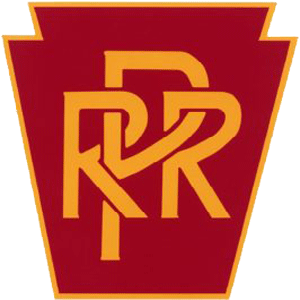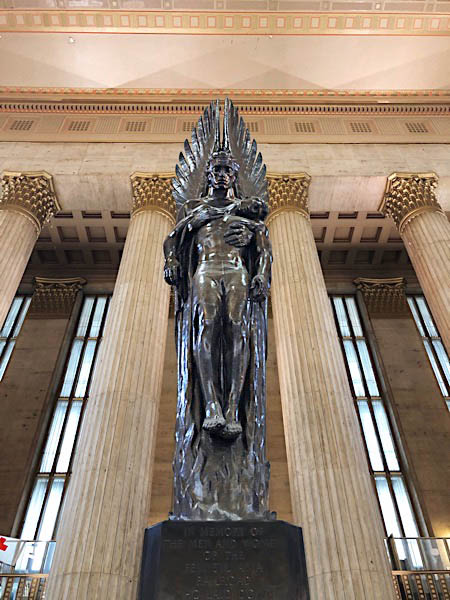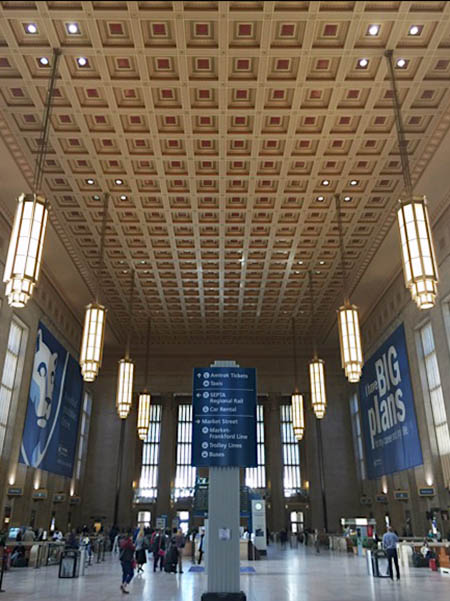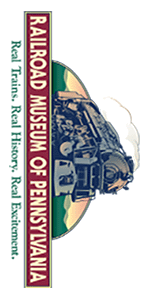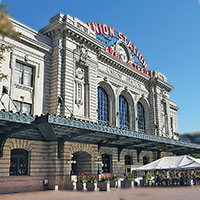 |
Amtrak Great Stations Philadelphia |
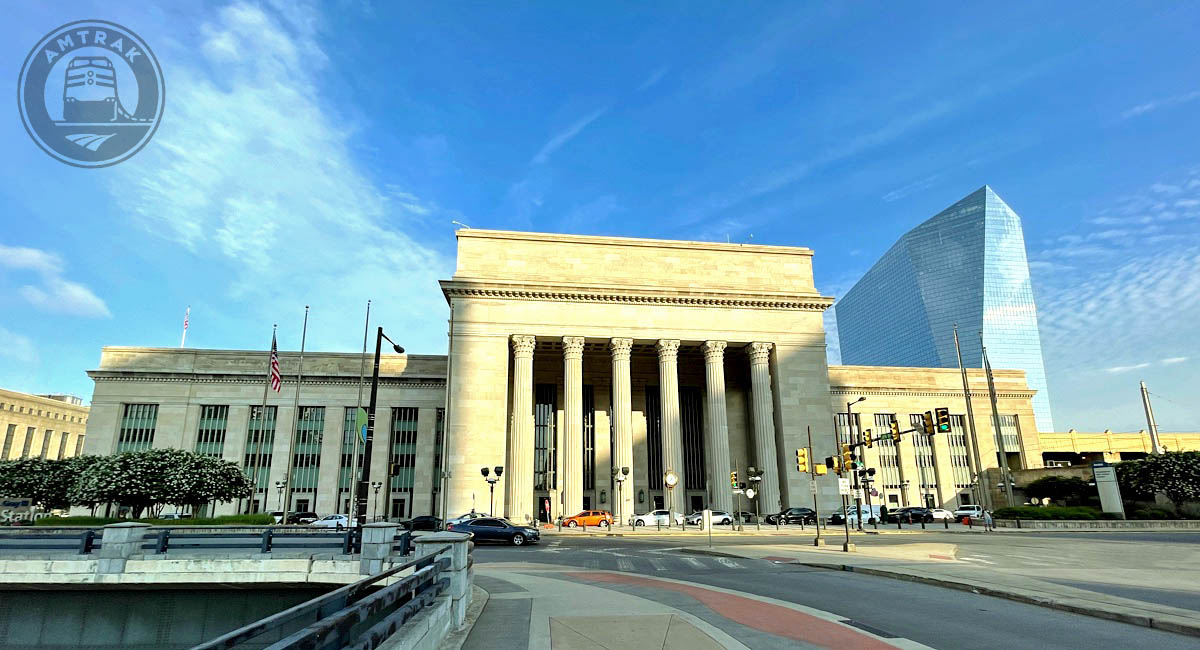
Philadelphia, Pa / Jul 2022 / RWH

William H. Gray III 30th Street Station
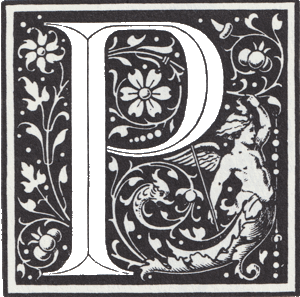 hiladelphia’s famed William H. Gray III 30th Street Station was built between 1929 and 1933 by the Pennsylvania Railroad (PRR) to replace the Broad Street Station that had become much too congested to support the city’s growth. Designed by Alfred Shaw of Graham, Anderson, Probst and White, the enormous, eight-story steel frame building has been listed on the National Register of Historic Places since 1978. It is an example of some of the railroad industry’s most monumental construction and is architecturally interesting for its use, adaptation and transformation of the Neoclassical style into a more modern, streamlined Art Deco style. The exterior of the building features typical neoclassical elements such as seventy-one-foot-high Corinthian columns forming impressive porticoes on the east and west facades, rendered in Alabama limestone.
hiladelphia’s famed William H. Gray III 30th Street Station was built between 1929 and 1933 by the Pennsylvania Railroad (PRR) to replace the Broad Street Station that had become much too congested to support the city’s growth. Designed by Alfred Shaw of Graham, Anderson, Probst and White, the enormous, eight-story steel frame building has been listed on the National Register of Historic Places since 1978. It is an example of some of the railroad industry’s most monumental construction and is architecturally interesting for its use, adaptation and transformation of the Neoclassical style into a more modern, streamlined Art Deco style. The exterior of the building features typical neoclassical elements such as seventy-one-foot-high Corinthian columns forming impressive porticoes on the east and west facades, rendered in Alabama limestone.
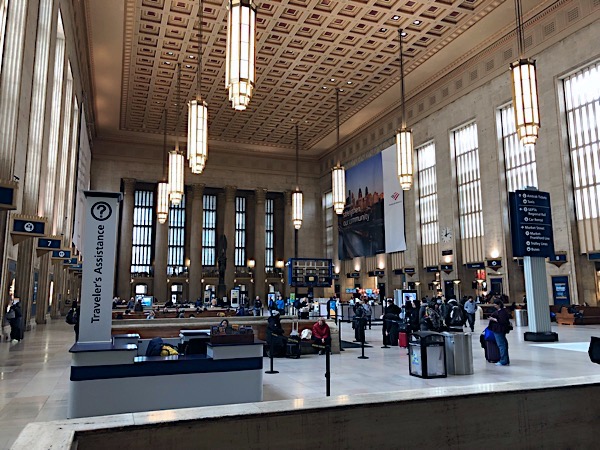 The interior of the station, meanwhile, is notable for both its stylistic and functional elements. The Main Concourse measures 290 by 135 feet with a 95-foot-high coffered ceiling and beautiful Art Deco chandeliers. It is lined by gilded and ornamented columns that contrast with the more austere classicism of the façade as well as by five-story-high cathedral-like windows. The floor, made of Tennessee marble, completes the sense of opulence of this impressive room.
The interior of the station, meanwhile, is notable for both its stylistic and functional elements. The Main Concourse measures 290 by 135 feet with a 95-foot-high coffered ceiling and beautiful Art Deco chandeliers. It is lined by gilded and ornamented columns that contrast with the more austere classicism of the façade as well as by five-story-high cathedral-like windows. The floor, made of Tennessee marble, completes the sense of opulence of this impressive room.
When it was built, novel functional features were designed into the complex to increase the utility of the building by giving it an efficient communications system without removing any of the desired monumentality. These features include an elaborate buzzer and intercom system new to those days, as well as an integrated pneumatic tube network for internal communications. The building also incorporated unusual spaces including a chapel, a mortuary and 3,300 square feet of hospital space – not traditional elements in a busy transportation hub. Capping off this most forward-thinking of structures, the architects reinforced the concrete roof of the concourse section to allow a landing space for small aircraft.
 William H. Gray III 30th Street Station also represents a milestone in the progression of American railroading and urban planning. One of the last of the major urban stations to be constructed, it was part of an overall central city improvement program begun in 1925 by the City of Philadelphia and the PRR called the Philadelphia Improvements project. This decades-long effort to reestablish a plan for the city’s urban core, which also led to the creation of the famous Benjamin Franklin Parkway, was borne out of the desire to simplify and beautify its streetscape and ease the growing congestion closer to the center of town.
William H. Gray III 30th Street Station also represents a milestone in the progression of American railroading and urban planning. One of the last of the major urban stations to be constructed, it was part of an overall central city improvement program begun in 1925 by the City of Philadelphia and the PRR called the Philadelphia Improvements project. This decades-long effort to reestablish a plan for the city’s urban core, which also led to the creation of the famous Benjamin Franklin Parkway, was borne out of the desire to simplify and beautify its streetscape and ease the growing congestion closer to the center of town.
At the same time, this station is rare in that it is one of the few in the country where trains arrive and depart from all four directions: from Boston in the north to Florida in the south, and from Atlantic City in the east to Chicago in the west. Facilitating this rare versatility, the station’s use of underground tracks for long-distance trains passing through the station marked the railroad’s commitment to electricity as a preferable source of energy for trains, continuing the gradual replacement of steam—itself a radical paradigm shift in the industry.
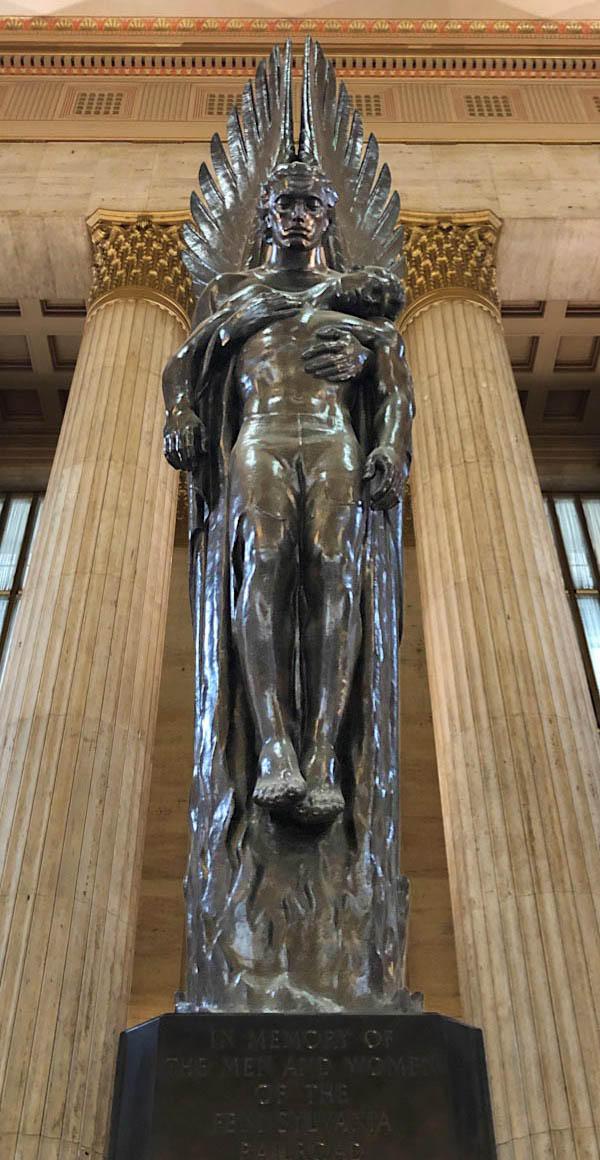 From 1988-1991, Amtrak led a $75 million development effort to renovate the station as it neared its 60th anniversary. The project included the restoration of the Main Concourse, with special attention given to its ceiling, chandeliers, travertine walls and massive marble columns.
Restoration experts repaired broken fingers and other elements of The Spirit of Transportation, while metal elements on the Pennsylvania Railroad War Memorial were cleaned and sealed with a fresh coat of protective wax. Above the passenger areas, approximately 280,000 square feet of office space was modernized to house 1,500 Amtrak employees. New shops, stores and food vendors were installed in the South Arcade and South Concourse. Outside, the facades were also refurbished and a former mail handling facility was converted into a 420-space underground parking garage.
From 1988-1991, Amtrak led a $75 million development effort to renovate the station as it neared its 60th anniversary. The project included the restoration of the Main Concourse, with special attention given to its ceiling, chandeliers, travertine walls and massive marble columns.
Restoration experts repaired broken fingers and other elements of The Spirit of Transportation, while metal elements on the Pennsylvania Railroad War Memorial were cleaned and sealed with a fresh coat of protective wax. Above the passenger areas, approximately 280,000 square feet of office space was modernized to house 1,500 Amtrak employees. New shops, stores and food vendors were installed in the South Arcade and South Concourse. Outside, the facades were also refurbished and a former mail handling facility was converted into a 420-space underground parking garage.
As a major transportation hub and West Philadelphia landmark, William H. Gray III 30th Street Station continues to be an anchor for development. In 2004, investors broke ground on the construction of the Cira Center, a 29-story office building designed by architect César Pelli. Completed the following year, the new building both stands on ground leased from Amtrak and also includes a skyway connecting it to a parking lot and the station. Designed by the same architect who built the world-famous Petronas Twin Towers in Malaysia, the striking new building marks both the evolution and continuation of the station’s unique and innovative history.
In recent years, the state, city and civic organizations have undertaken numerous efforts to enhance the streetscape and pedestrian zones around the station by widening sidewalks and creating safer street crossings. As part of these efforts, in 2011 the University City District, working with PennDOT, created “The Porch” between the station and Market Street. An inviting and active public space, it includes seating, shade trees and colorful seasonal plantings, as well as a full schedule of activities. The end result has been a busier public space that attracts nearby office workers, students and local residents.
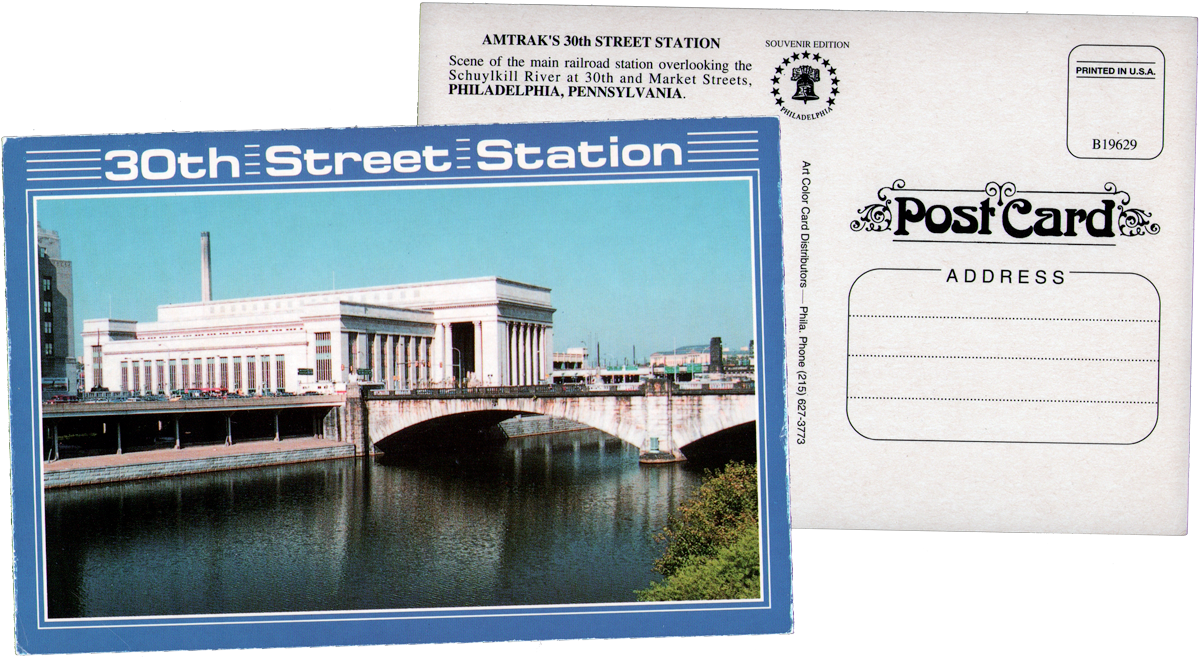
postcard / collection
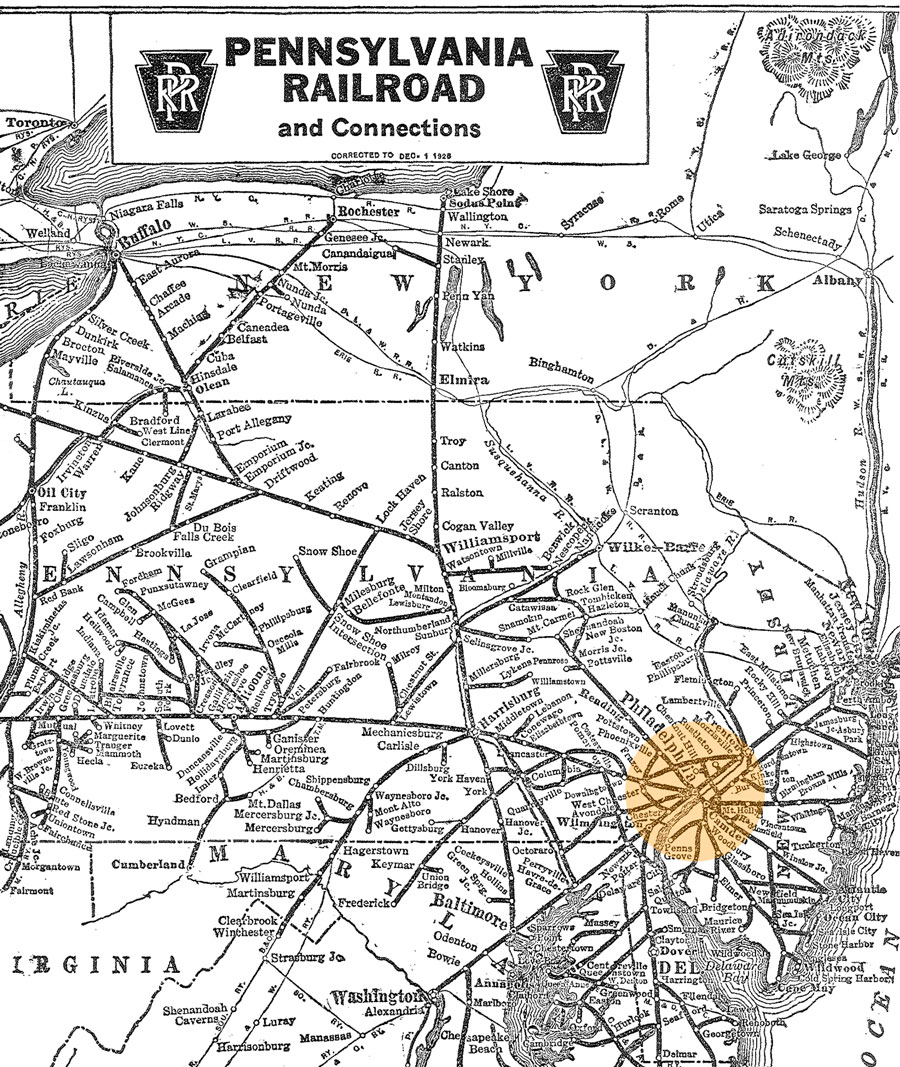
1930 Official Guide map / collection


Philadelphia
- name:William H. Gray III 30th Street Station
- station code:PHL
- location: 2955 Market Street, Philadelphia
- owner:Amtrak
- operators:Amtrak, SEPTA
- platforms:3 upper level, 6 lower level
- tracks:6 upper level, 9 lower level
- opened:1933, replaced West Philadelphia station
- style:Classical Revival
- architect:Graham, Anderson, Probst & White
- rebuilt:1989
- Nat Reg Historic Places:1978
- notes:
- 3rd busiest Amtrak station after Penn Station New York and Washington Union
- routes:
- Northeast Corridor | Cardinal | Carolinian | Crescent | Palmetto | Pennsylvanian | Silver Service
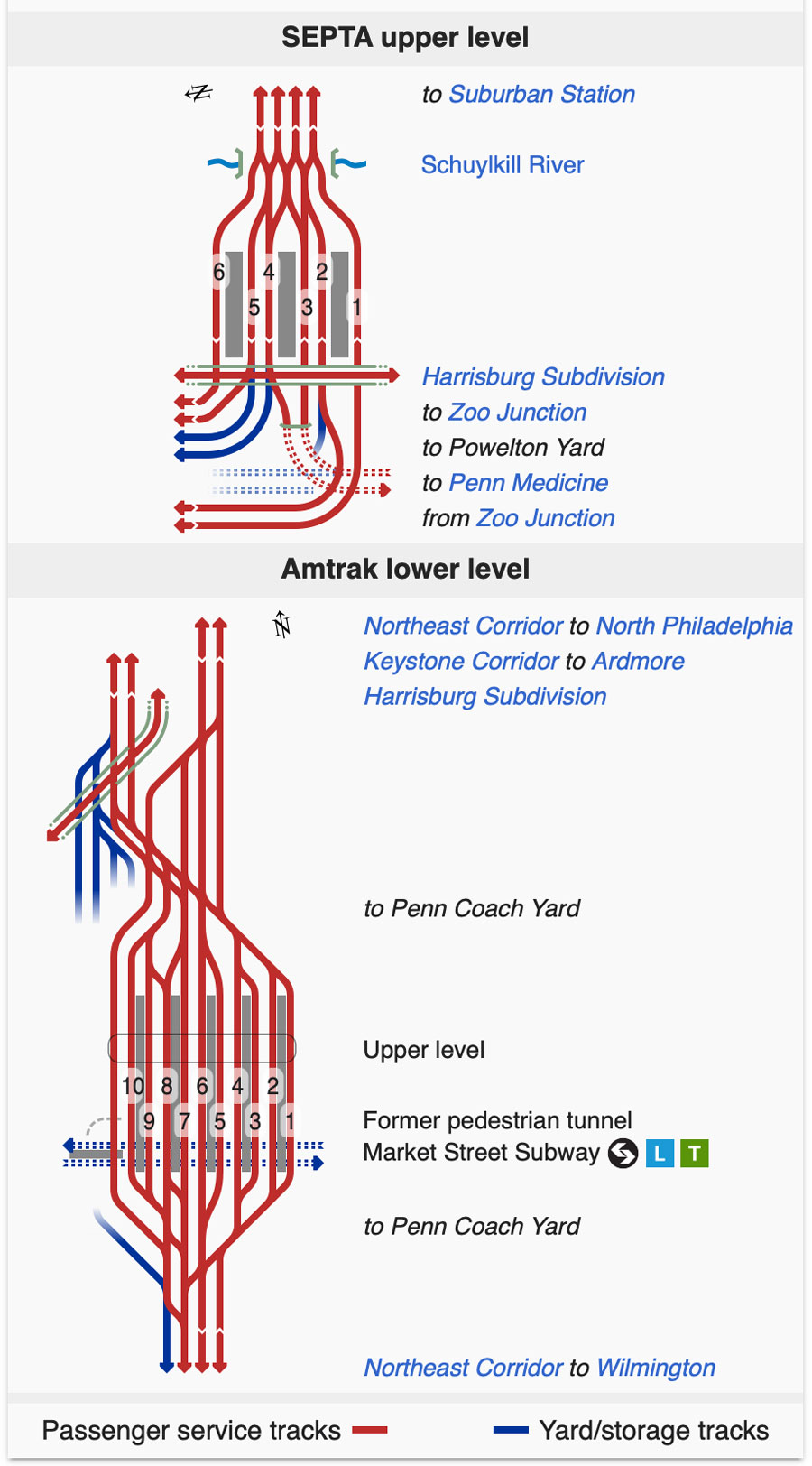
Wikipedia
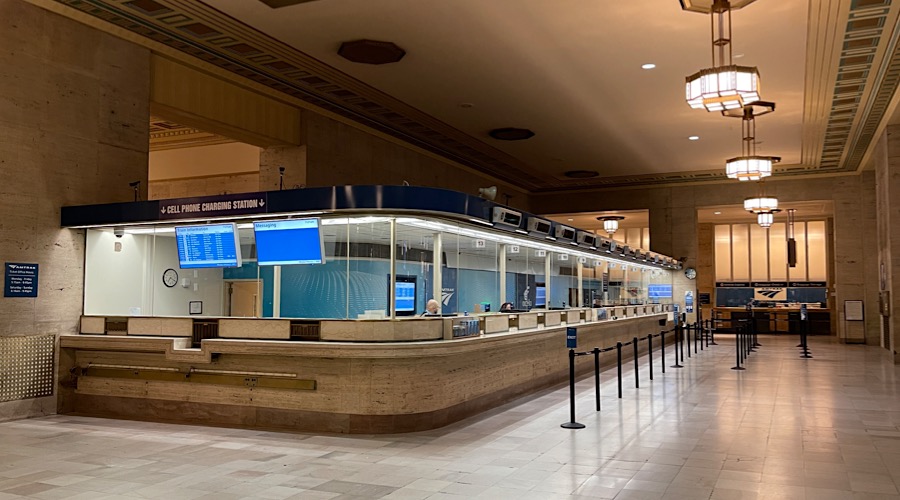

RWH

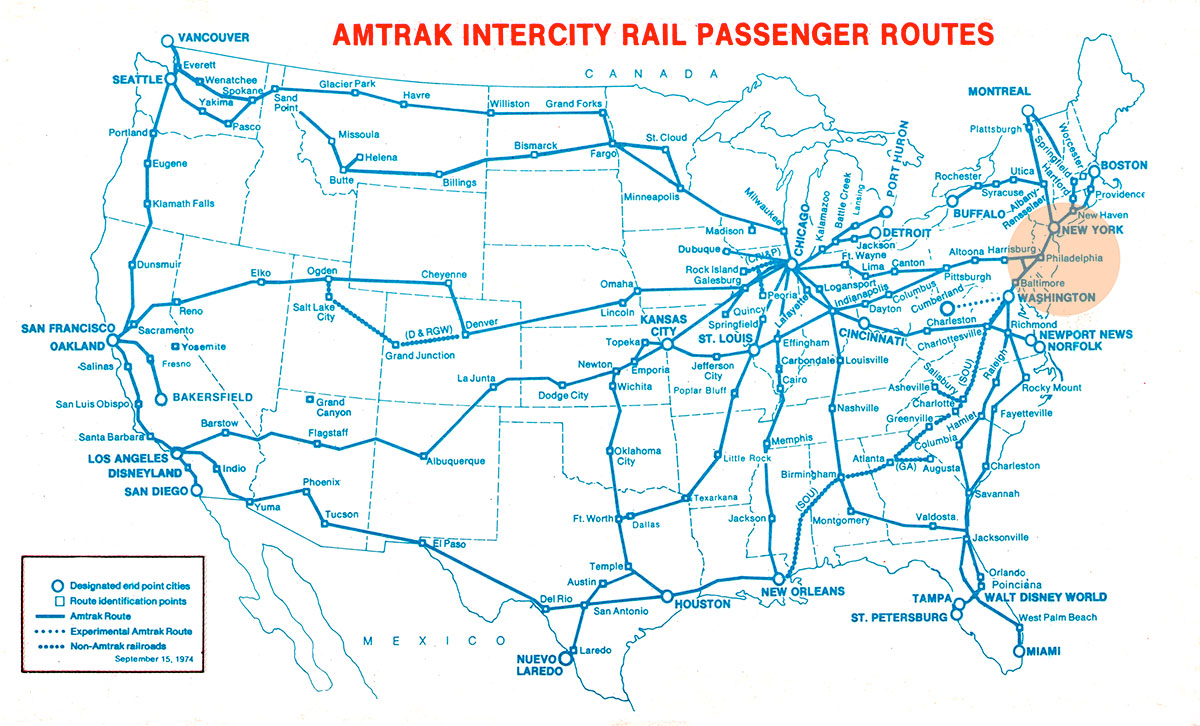
1974 Amtrak timetable map / collection
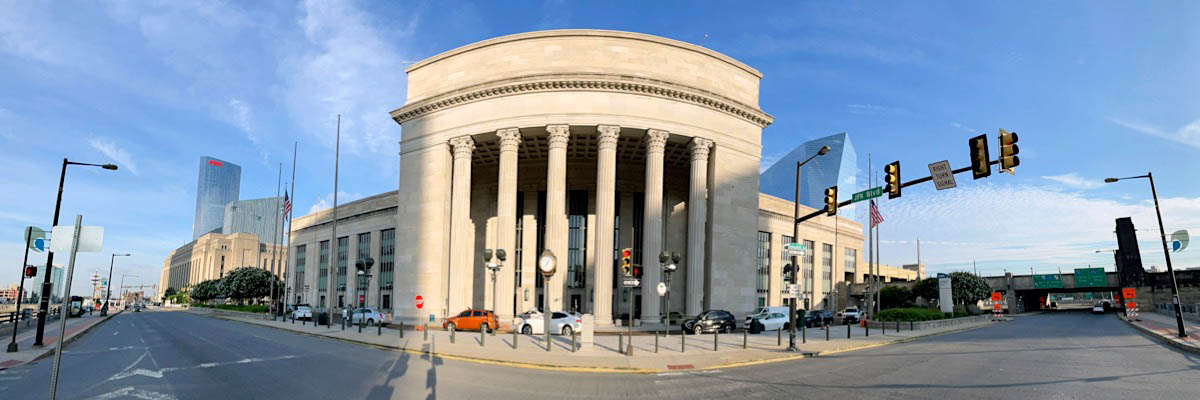
Philadelphia, Pa / Jul 2022 / RWH
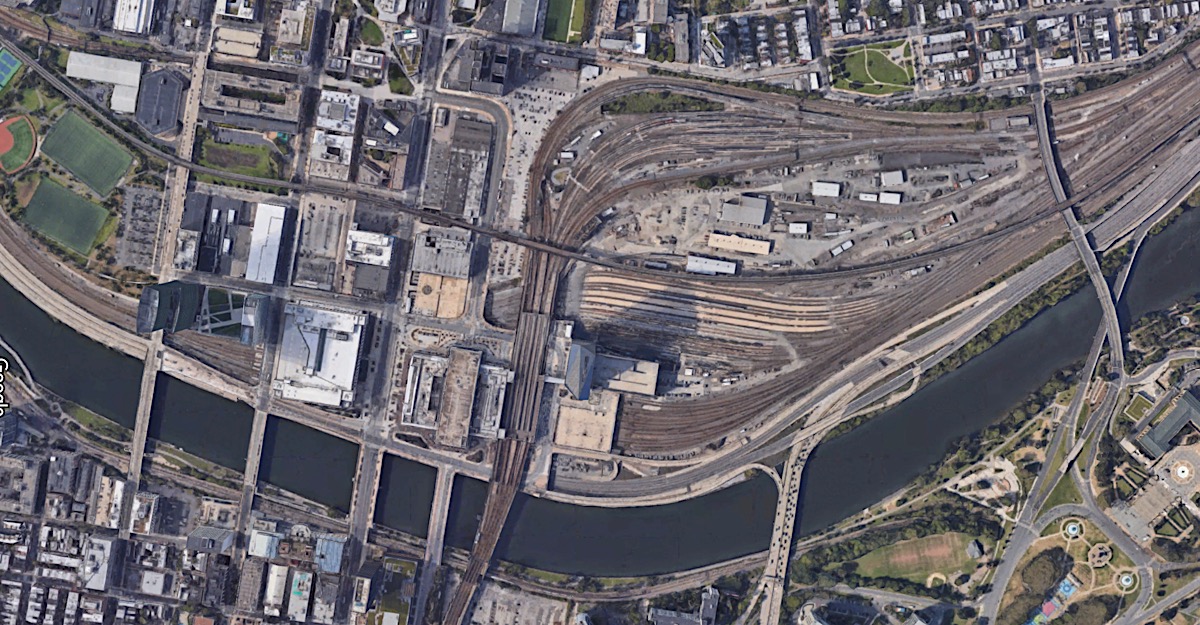
30th Street station overhead / Google Maps

See also our related route scrapbooks:
Exterior
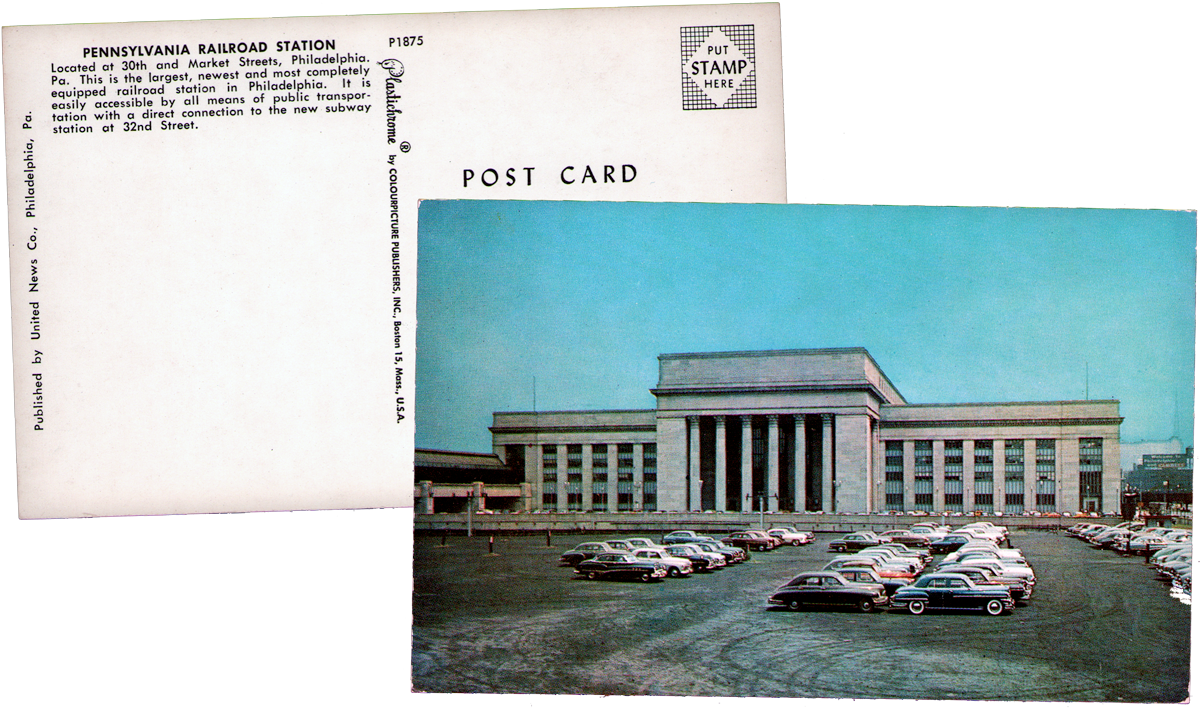
postcard / collection

Philadelphia, Pa / Feb 2019 / RWH

Click to see Philadelphia's 30th Street Station plotted on a Google Maps page
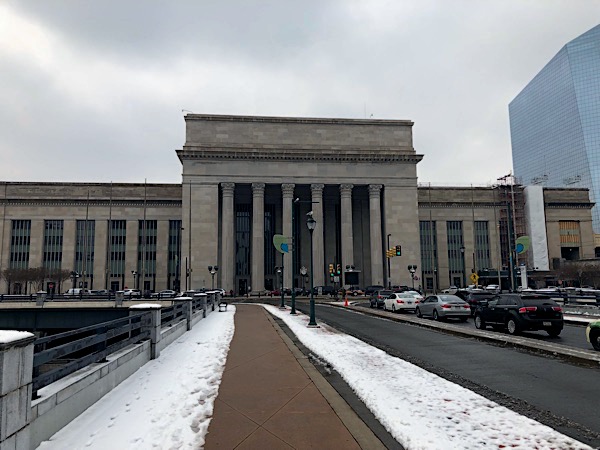
Philadelphia, Pa / Feb 2019 / RWH

Philadelphia, Pa / Feb 2019 / RWH
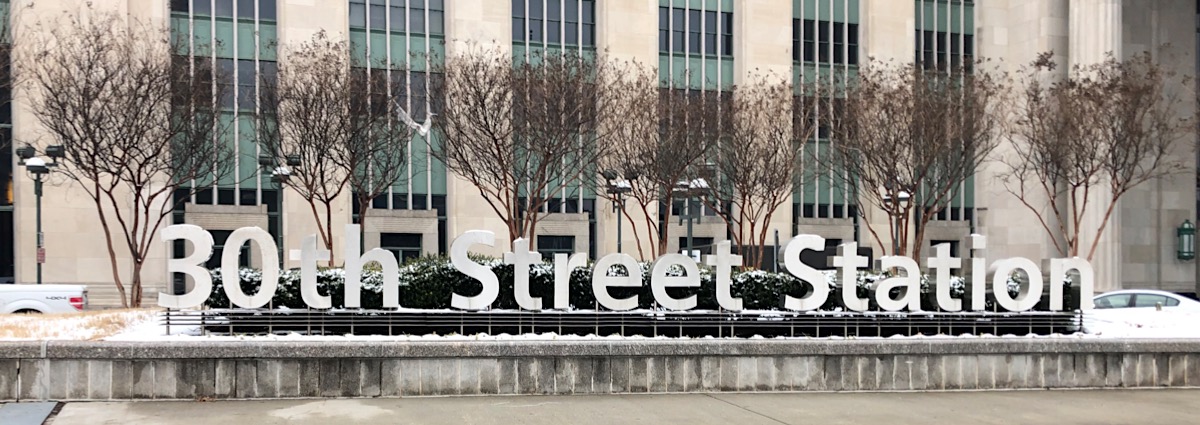
Philadelphia, Pa / Feb 2019 / RWH
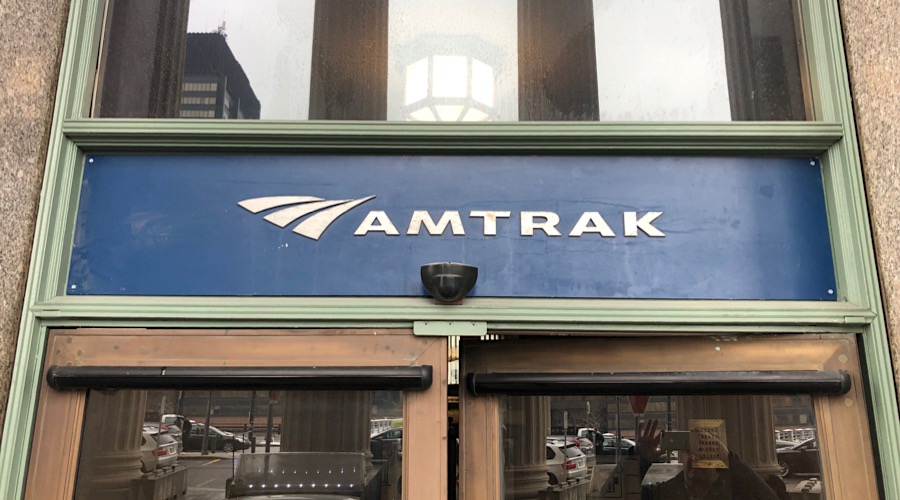
Feb 2019 / RWH
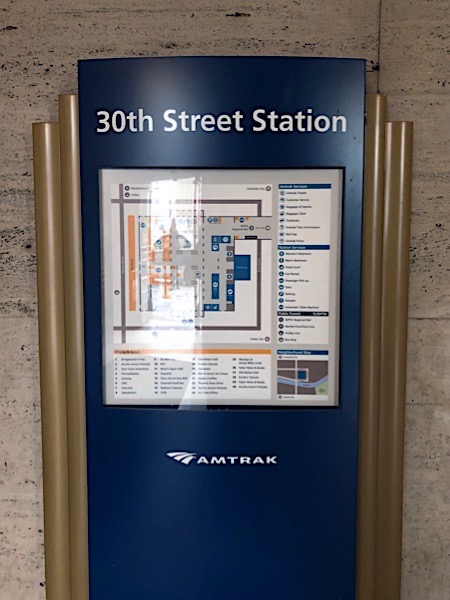
RWH
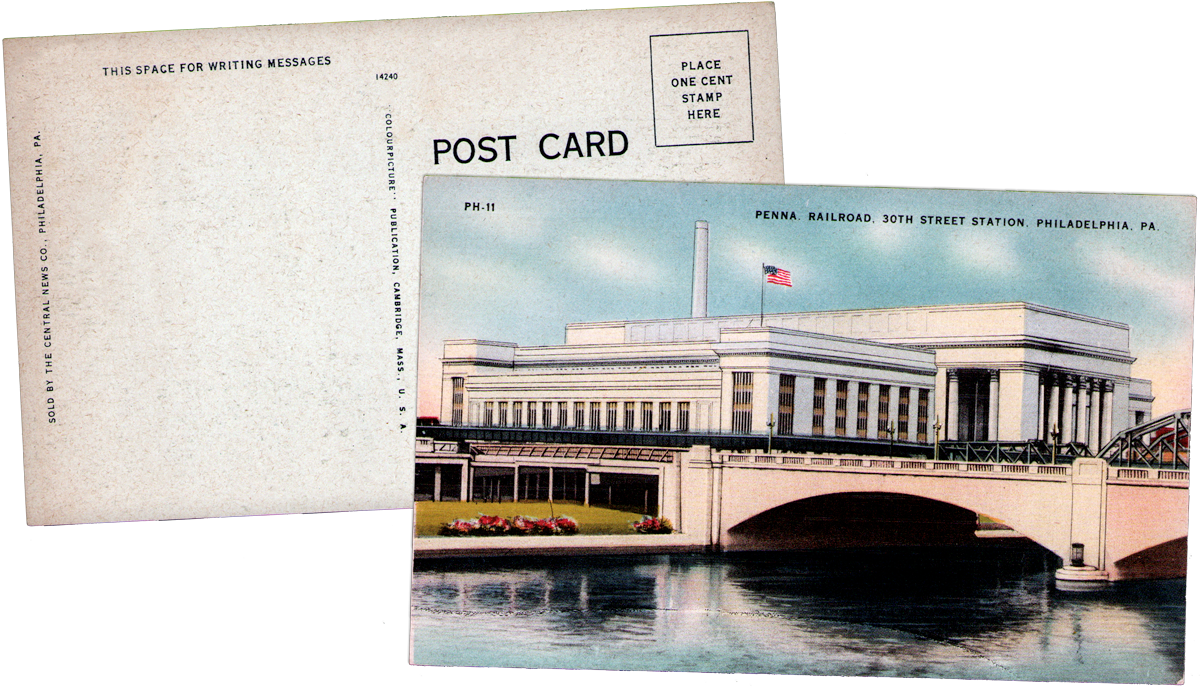
postcard / collection
 Schuykill Avenue Entrance
Schuykill Avenue Entrance

Philadelphia, Pa / Jul 2022 / RWH
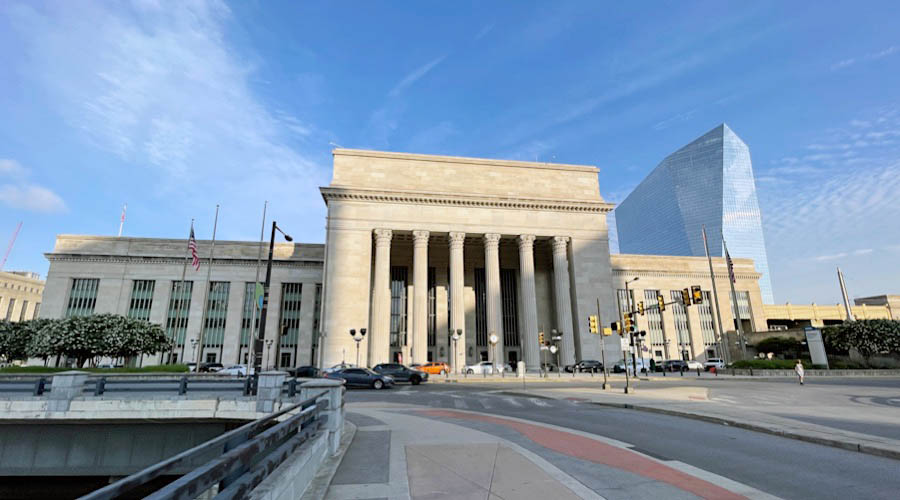
Philadelphia, Pa / Jul 2022 / RWH
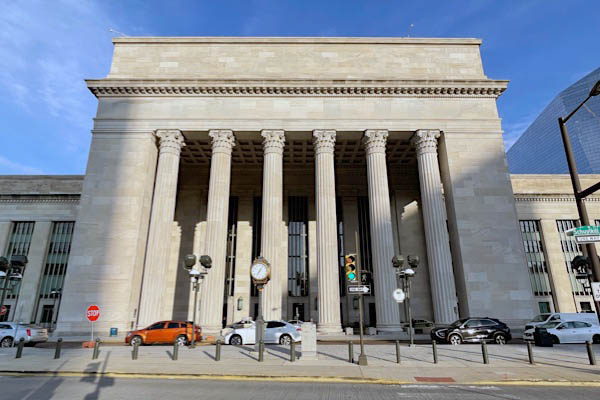
Jul 2022 / RWH

Jul 2022 / RWH
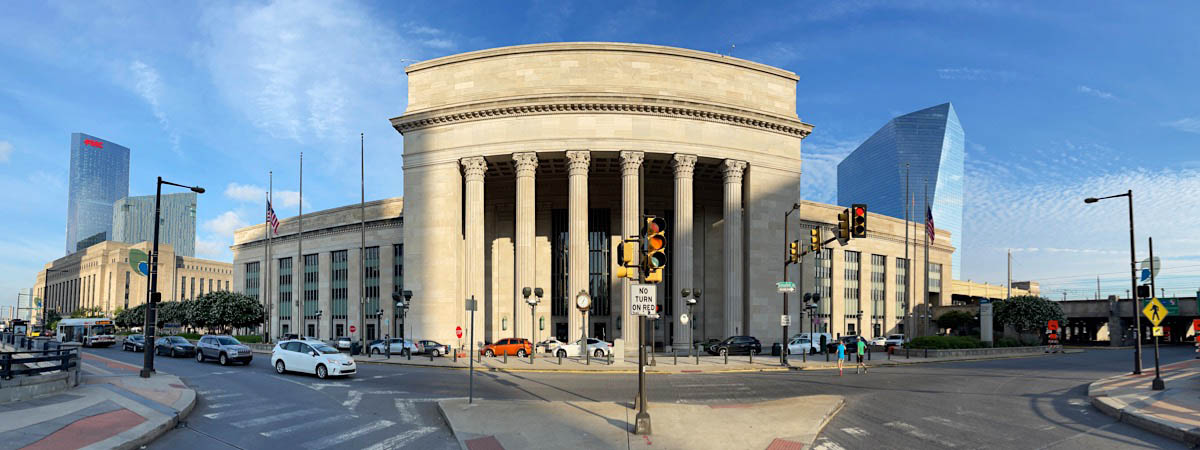
Philadelphia, Pa / Jul 2022 / RWH
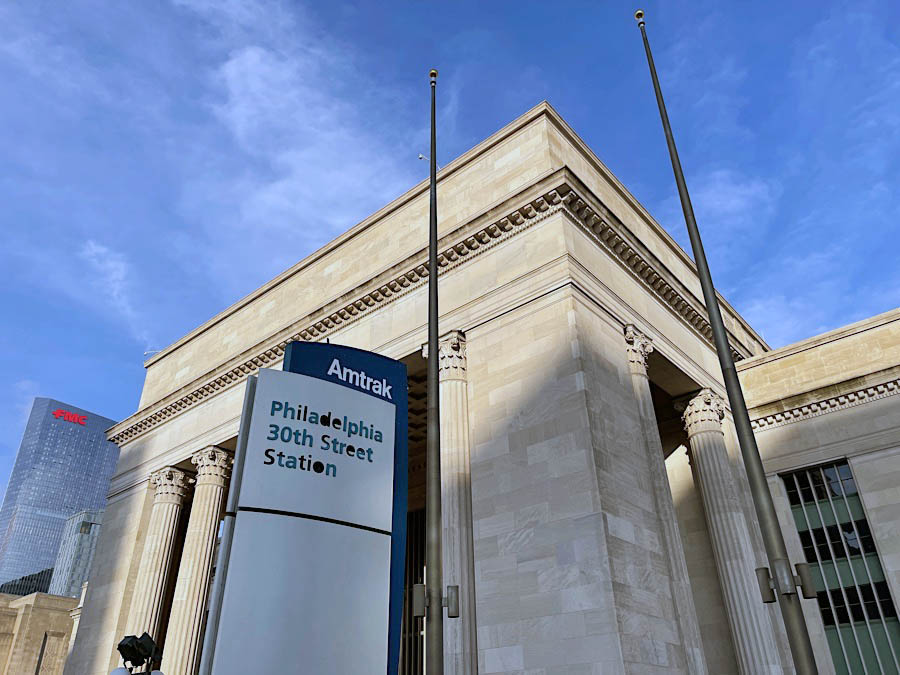
Jul 2022 / RWH
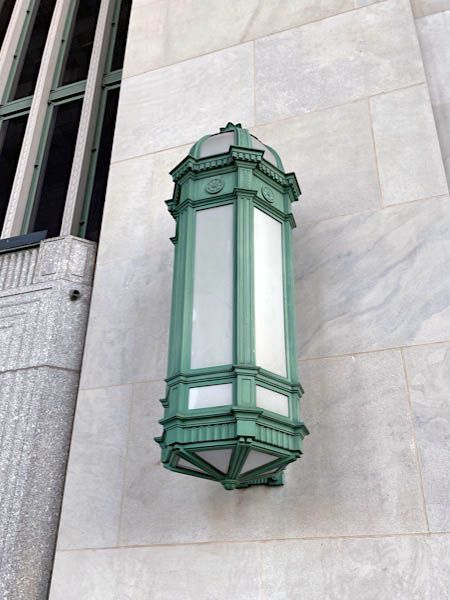
Jul 2022 / RWH

Philadelphia, Pa / Jul 2022 / RWH
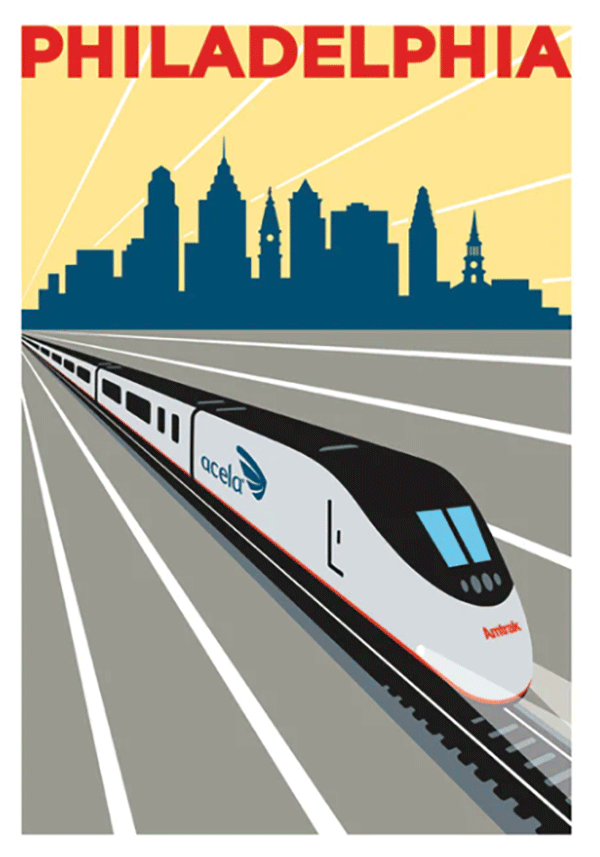
collection
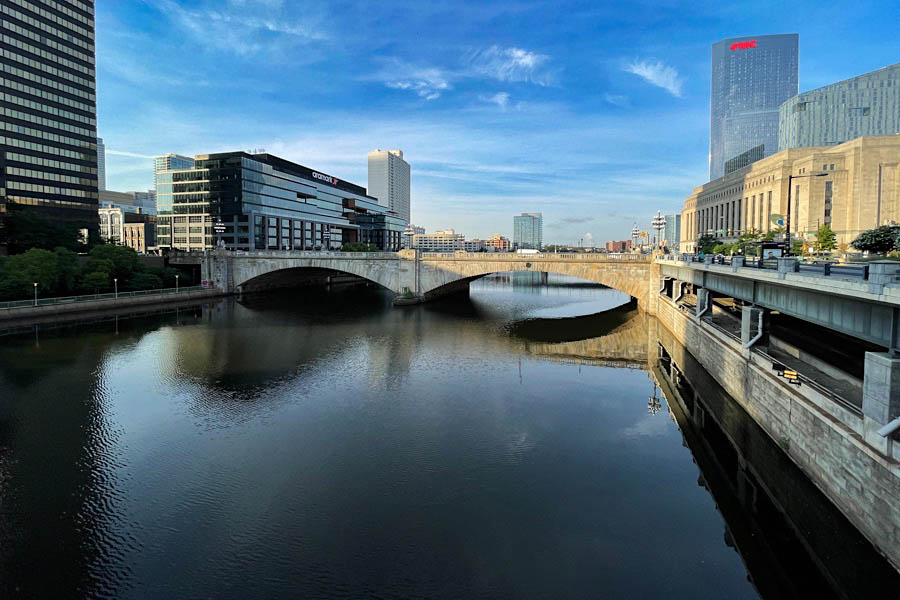
Philadelphia, Pa / Jul 2022 / RWH
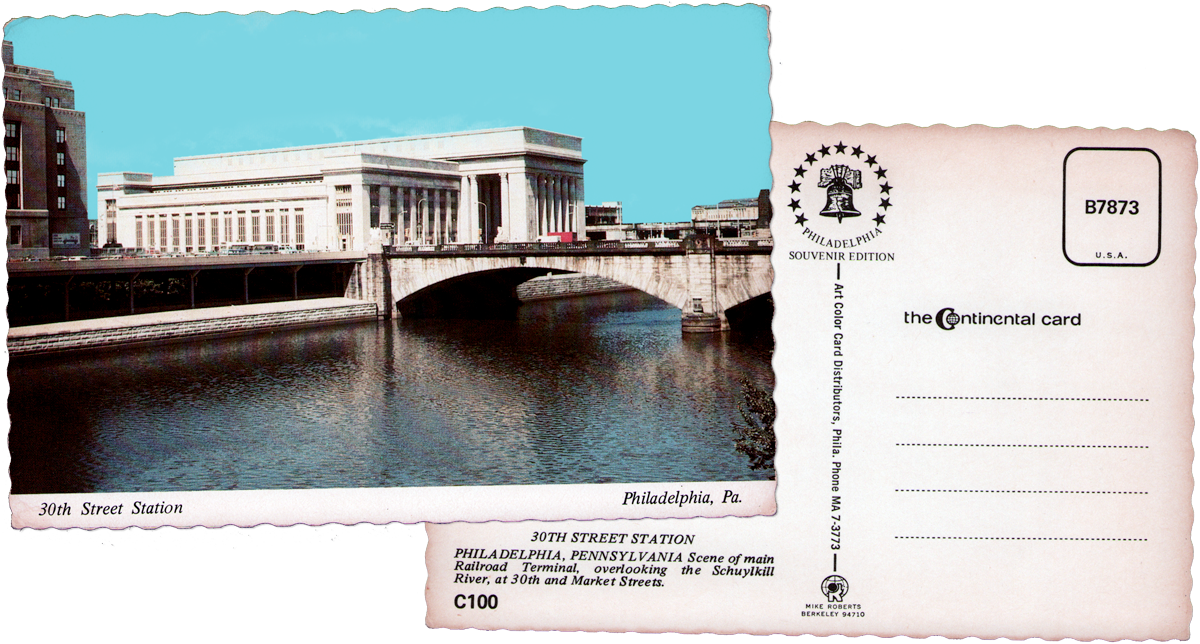
postcard / collection
 North 30th Street Entrance
North 30th Street Entrance
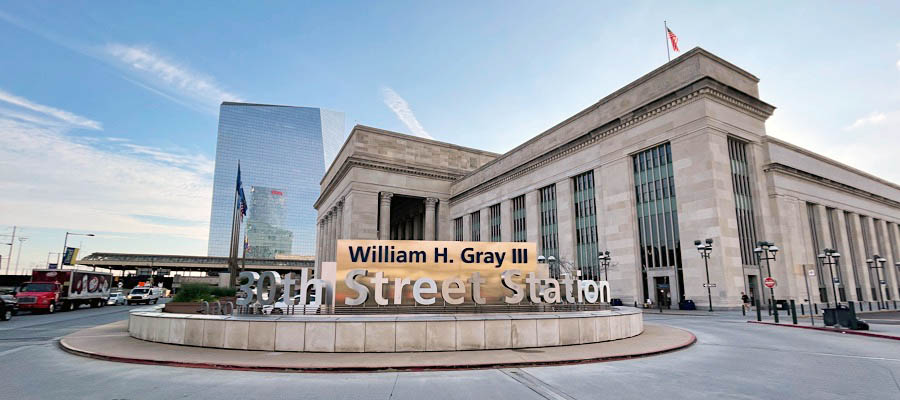
Philadelphia, Pa / Jul 2022 / RWH
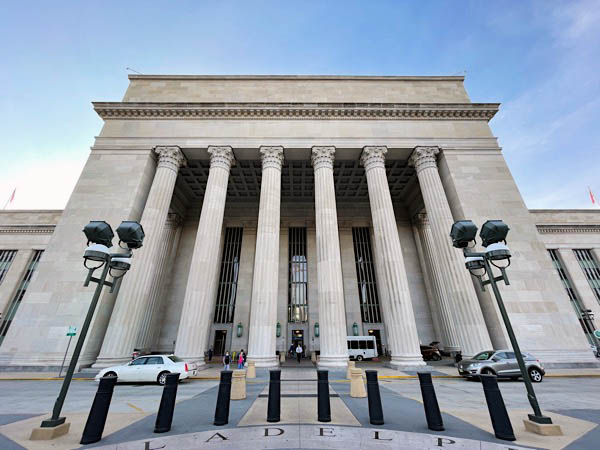
Philadelphia, Pa / Jul 2022 / RWH
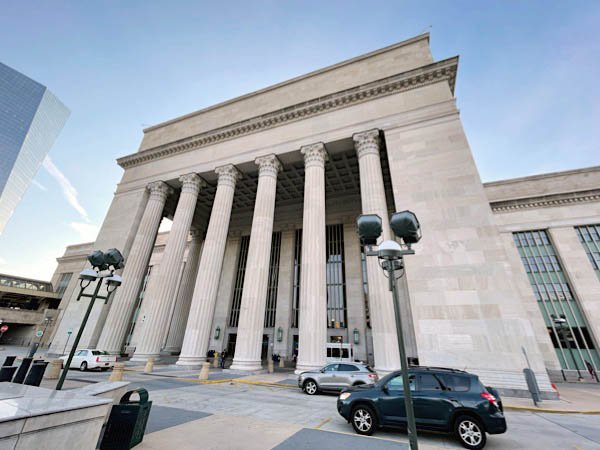
Jul 2022 / RWH
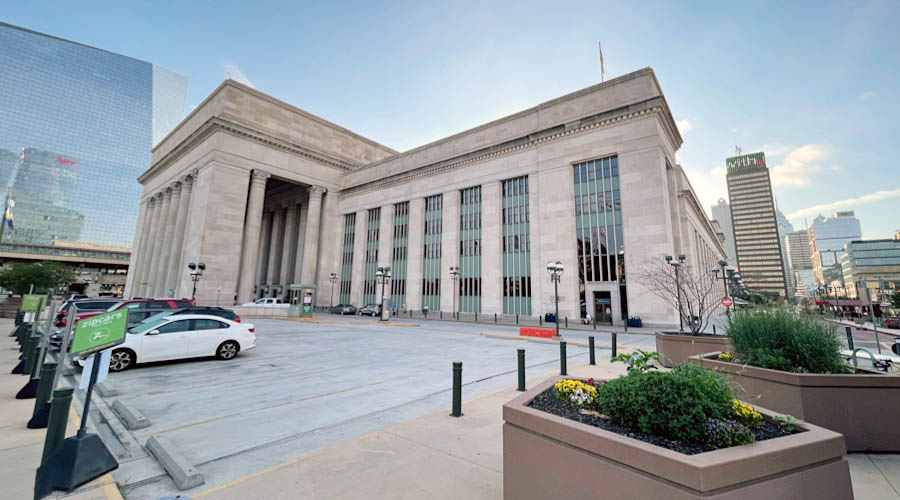
Jul 2022 / RWH
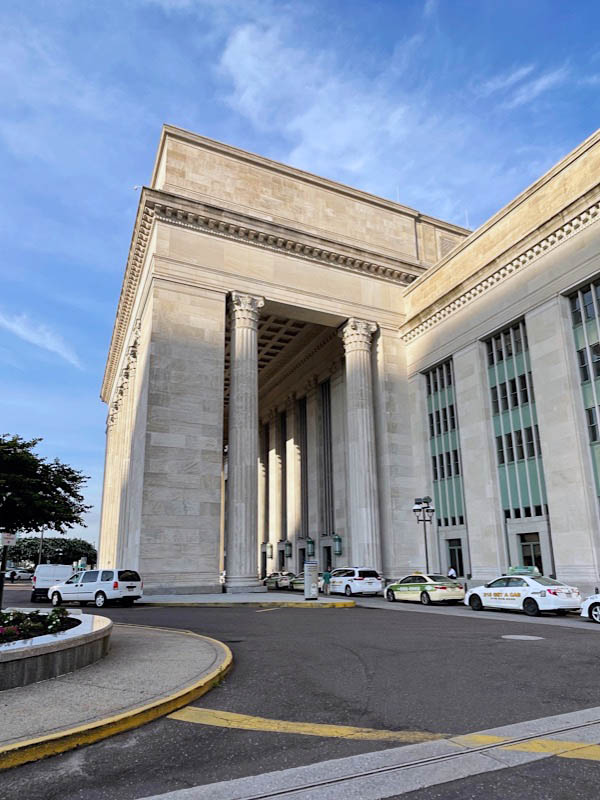
Jul 2022 / RWH

Jul 2022 / RWH

Philadelphia, Pa / Jul 2022 / RWH
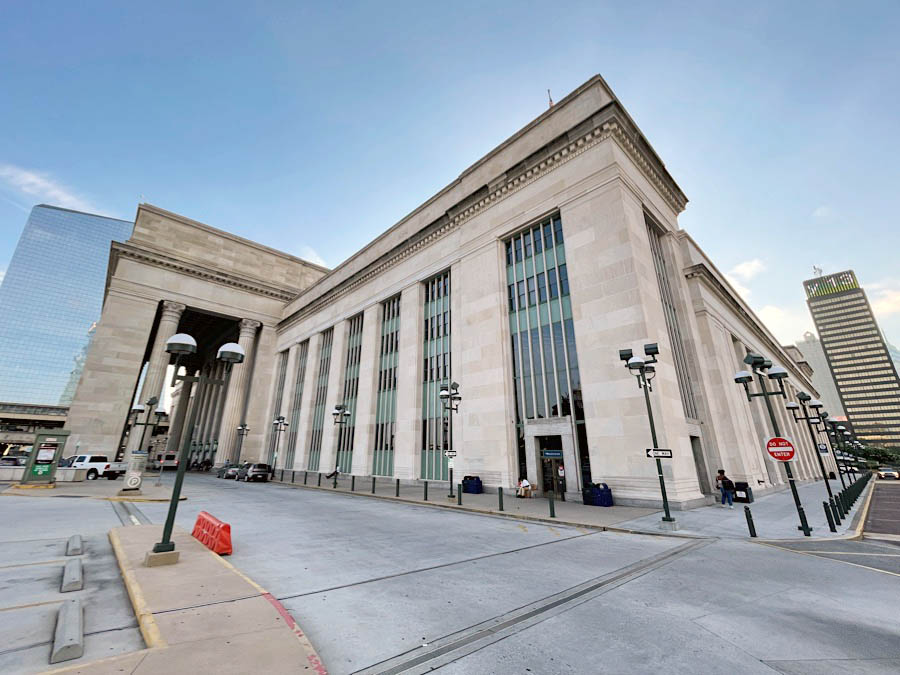
Philadelphia, Pa / Jul 2022 / RWH

Jul 2022 / RWH

Jul 2022 / RWH
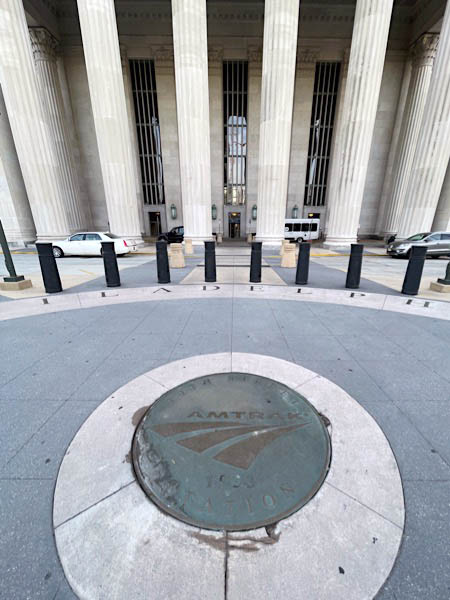
Jul 2022 / RWH
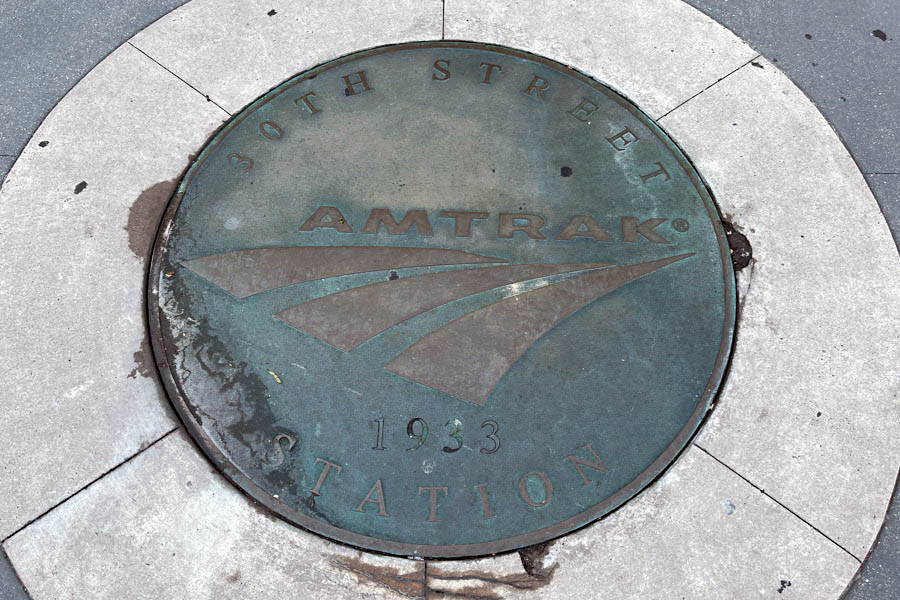
Jul 2022 / RWH

Philadelphia, Pa / Jul 2022 / RWH
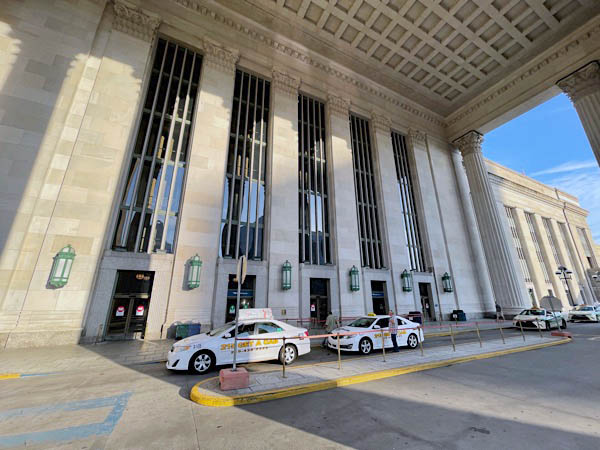
Philadelphia, Pa / Jul 2022 / RWH

postcard / collection
Interior
Construction began in 1927 and the station opened in 1933, starting with two platform tracks. The vast waiting room is faced with travertine and the coffered ceiling is painted gold, red and cream. The building's exterior has columned porte-cocheres on the west and east facade, and shows a balance between classical and modern architectural styles.
The station had a number of innovative features, including a pneumatic tube system, an electronic intercom, and a reinforced roof with space for small aircraft to land, and contained a mortuary, a chapel and more than 3,000 square feet of hospital space.
Wikipedia / image RWH
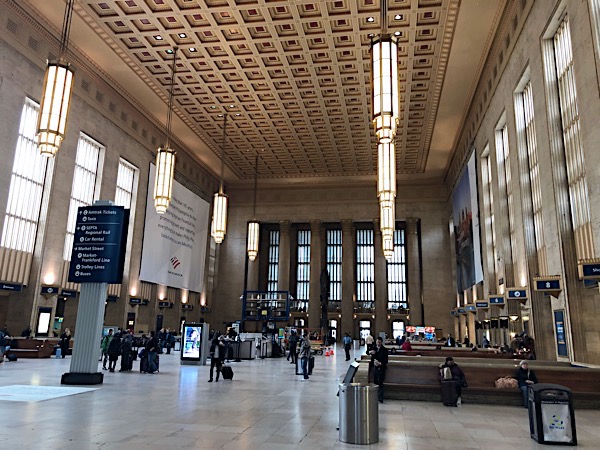

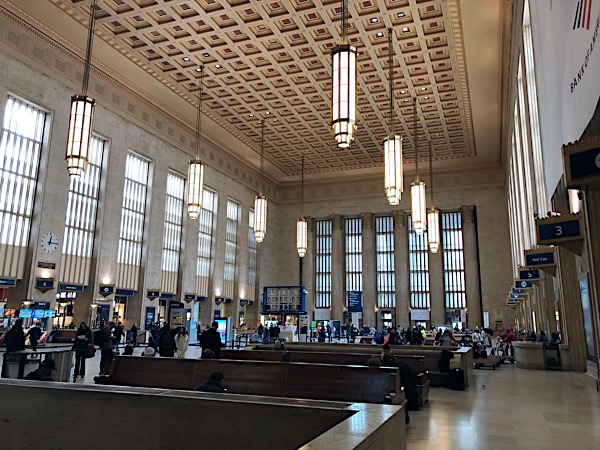

Philadelphia, Pa / Feb 2019 / RWH
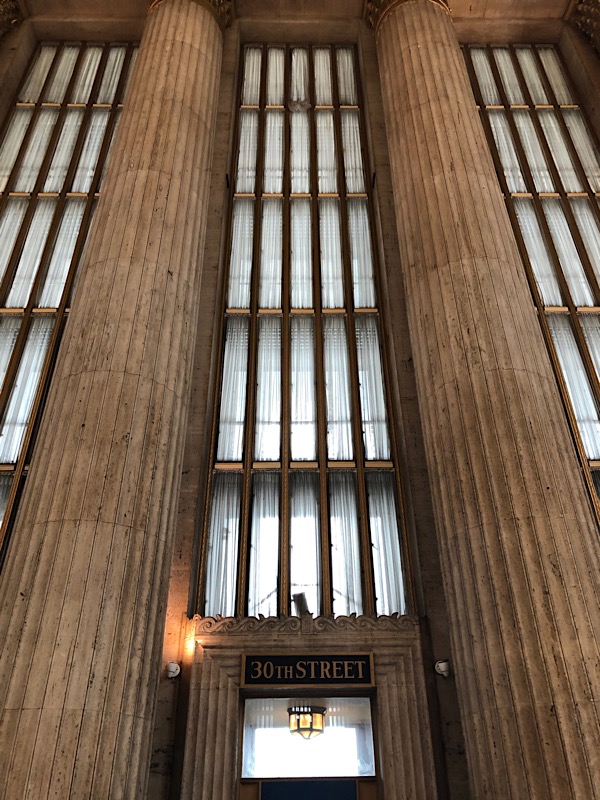
Feb 2019 / RWH
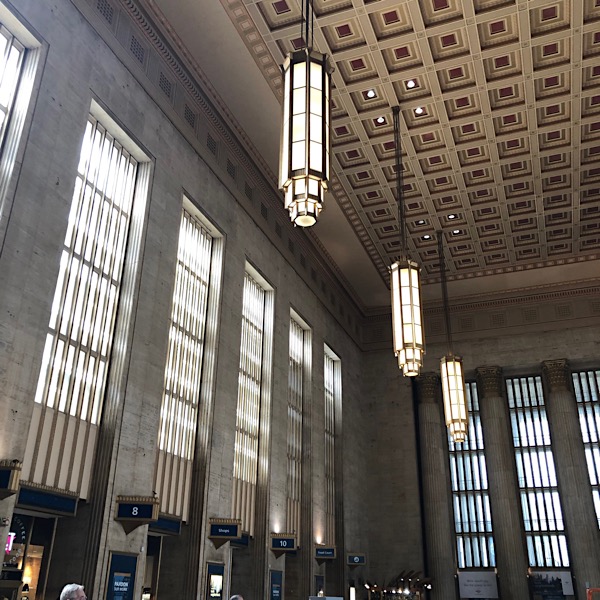
Feb 2019 / RWH

Feb 2019 / RWH
 Archangel Michael
Archangel Michael
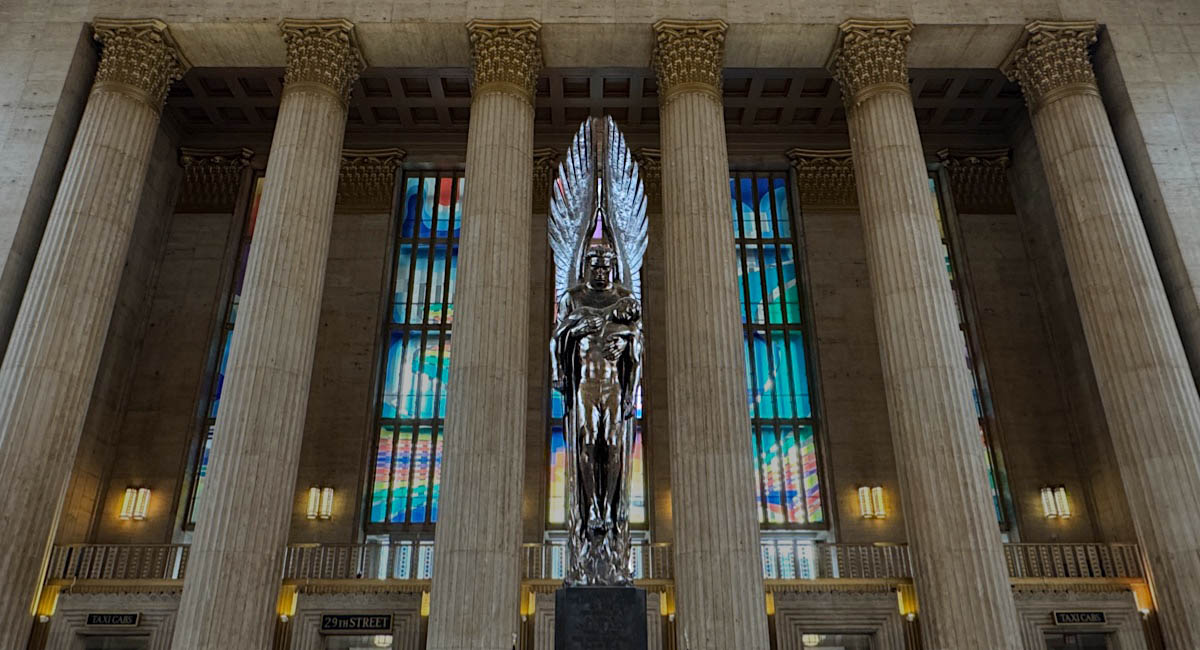
May 2024 / RWH

1930 Official Guide ad / collection
Prominently displayed is the Pennsylvania Railroad World War II Memorial, which honors Pennsylvania Railroad employees killed in World War II. It consists of a bronze statue of the archangel Michael lifting the body of a dead soldier out of the flames of war, and was sculpted by Walker Hancock in 1950. On the four sides of the base of that sculpture are the 1,307 names of those employees in alphabetical order.

Wikipedia
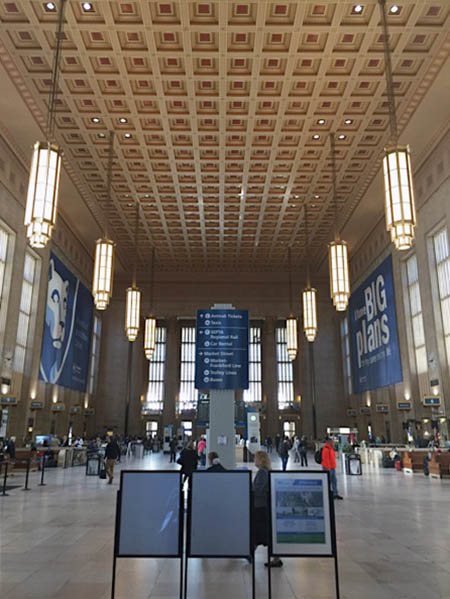
Apr 2016 / RWH
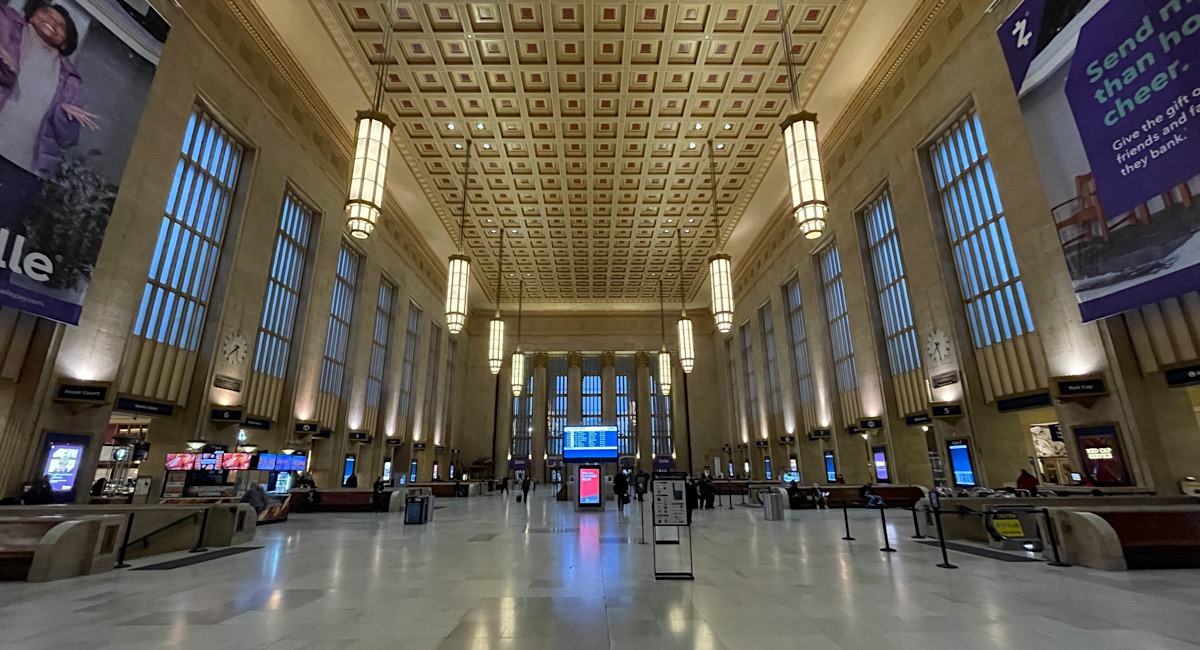
Philadelphia, Pa / Feb 2022 / RWH

Philadelphia, Pa / Feb 2022 / RWH
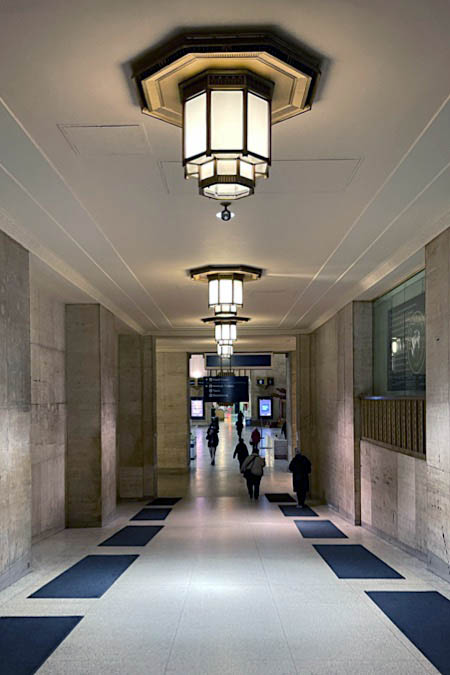
Feb 2022 / RWH
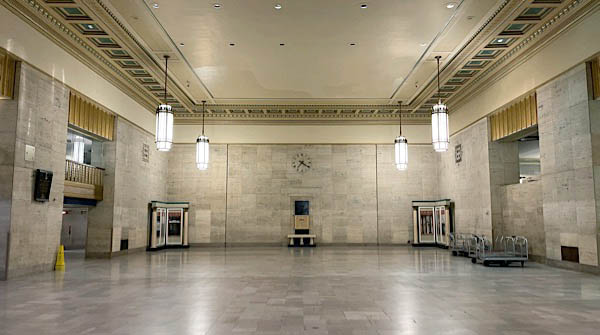
Feb 2022 / RWH

Feb 2022 / RWH

Feb 2022 / RWH
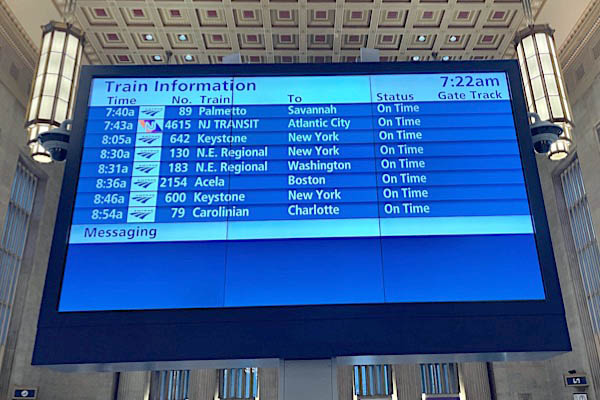
Feb 2022 / RWH

Philadelphia, Pa / Feb 2022 / RWH

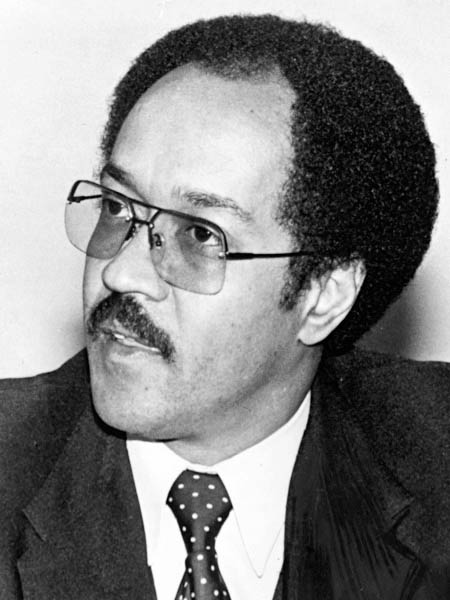 In 2014, the U.S. Congress passed a law to rename what was then “30th Street Station” in honor of former U.S. Representative William Herbert Gray III, who represented Pennsylvania in that body from 1979 until 1991.
In 2014, the U.S. Congress passed a law to rename what was then “30th Street Station” in honor of former U.S. Representative William Herbert Gray III, who represented Pennsylvania in that body from 1979 until 1991.
Born in Louisiana to parents who were both educators, Gray spent his early childhood in Florida. The family moved to Philadelphia in 1949 when his father took over the pastoral position at Bright Hope Baptist Church vacated by the recently deceased William Gray Sr. The younger Gray followed in his grandfather and father’s footsteps by entering the ministry, receiving master’s degrees in divinity and theology. He later assumed the pastor position at Bright Hope and rose to prominence as an activist with an interest in community housing and unemployment issues.
In Congress Gray was a member of the House Budget, Foreign Affairs and Appropriations committees, and he served as the first African American chairman of the Budget Committee. In 1989 Gray achieved another milestone when he became the Democratic Majority Whip, the third–ranking leadership position in the House of Representatives. Following his departure from Congress, Gray served as president and CEO of the United Negro College Fund for more than a decade.
Also in 2014, Amtrak, Drexel University and Brandywine Realty Trust selected Skidmore, Owings & Merrill LLP (SOM), in association with Parsons Brinckerhoff, OLIN, and HR&A Advisors, to develop a comprehensive joint master plan for the area around the station. The SOM team aimed to develop an integrated, long-term vision where the station is at the epicenter of a dynamic, urban neighborhood full of opportunities for community development, economic development and improved transportation connections. The project team engaged a wide range of stakeholders from across the city and its neighborhoods, soliciting feedback and synthesizing ideas collected during open houses, community events and other public meetings.
Unveiled in June 2016, the joint master plan envisions 40 new acres of open space and 18 million square feet of new development, including an entirely new mixed-use neighborhood anchoring the William H. Gray III 30th Street Station District atop 88 acres of rail yards along the western bank of the Schuylkill River. With a proposed $2 billion investment in roads, utilities, parks, bridges and extension of transit services, the plan has the estimated potential to unlock $4.5 billion in private real estate investment, in addition to $3.5 billion for Drexel’s adjacent Schuylkill Yards project being developed by Brandywine Realty Trust.
In early 2017, the William H. Gray III 30th Street Station District Plan was honored with the architecture industry’s most prestigious award – an Institute Honor Award for Regional and Urban Design from the American Institute of Architects. The District Plan was selected from more than 500 submissions from around the world.
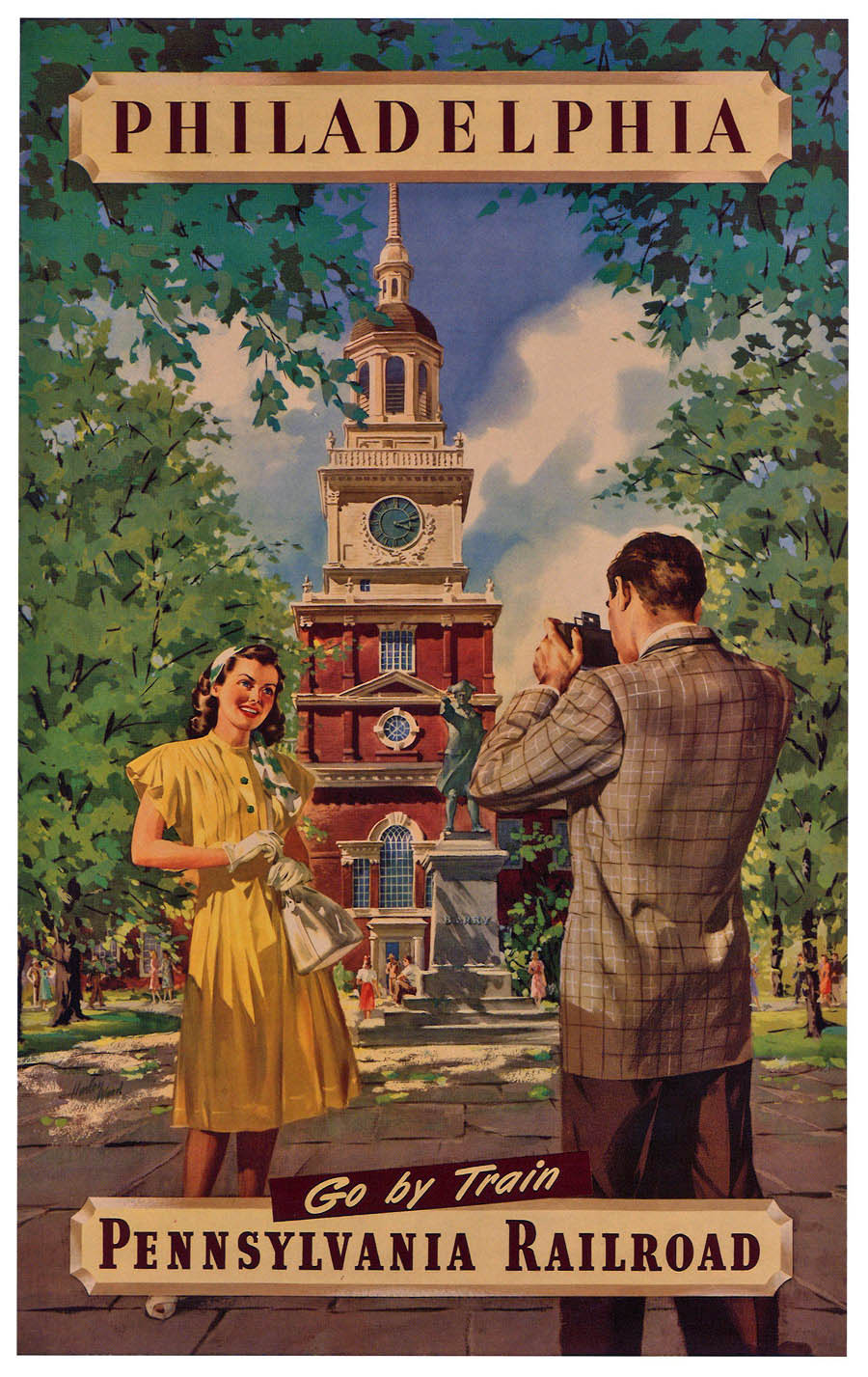
collection
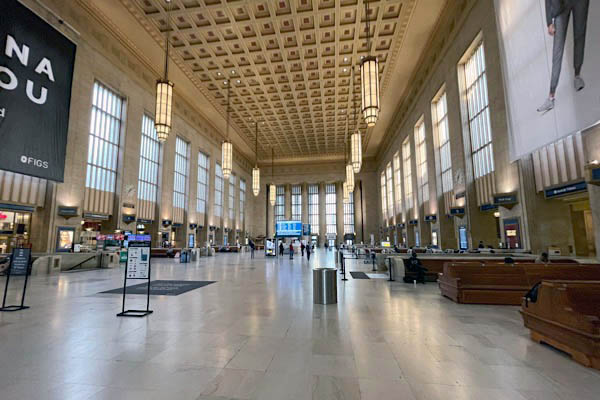
Jul 2022 / RWH
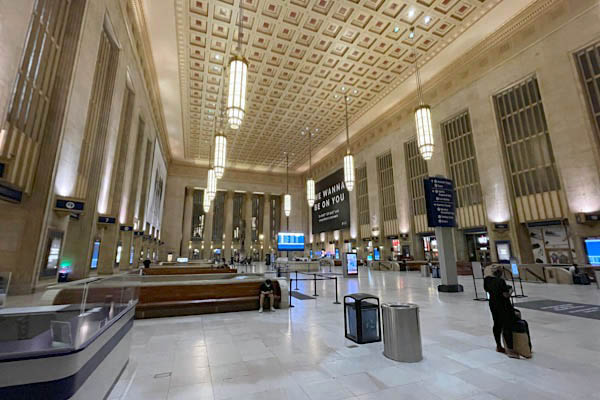
Jul 2022 / RWH

Philadelphia, Pa / Jul 2022 / RWH
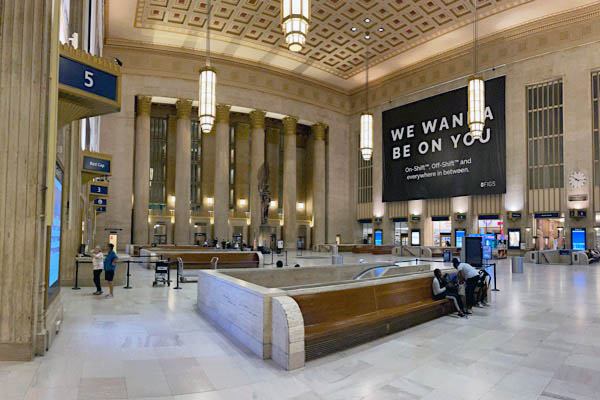
Jul 2022 / RWH
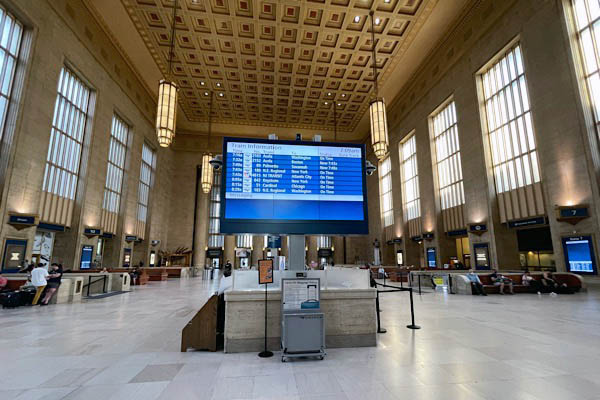
Jul 2022 / RWH
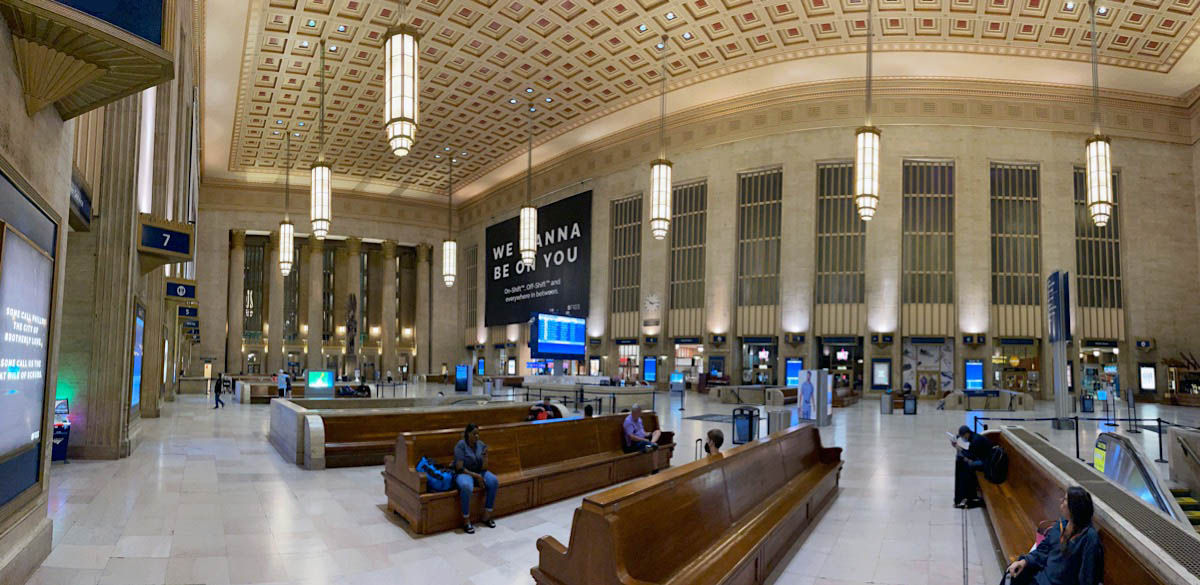
Philadelphia, Pa / Jul 2022 / RWH

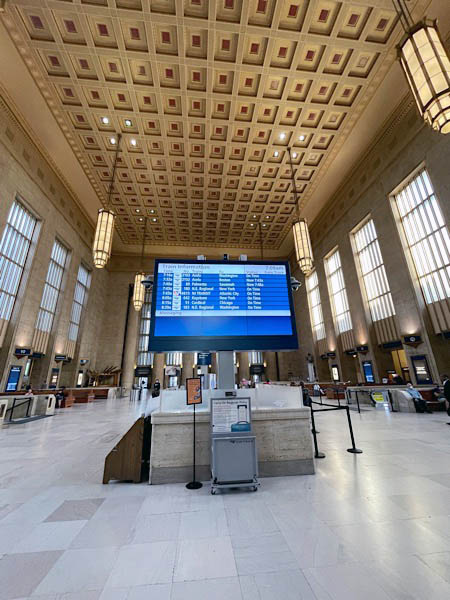

Jul 2022 / RWH
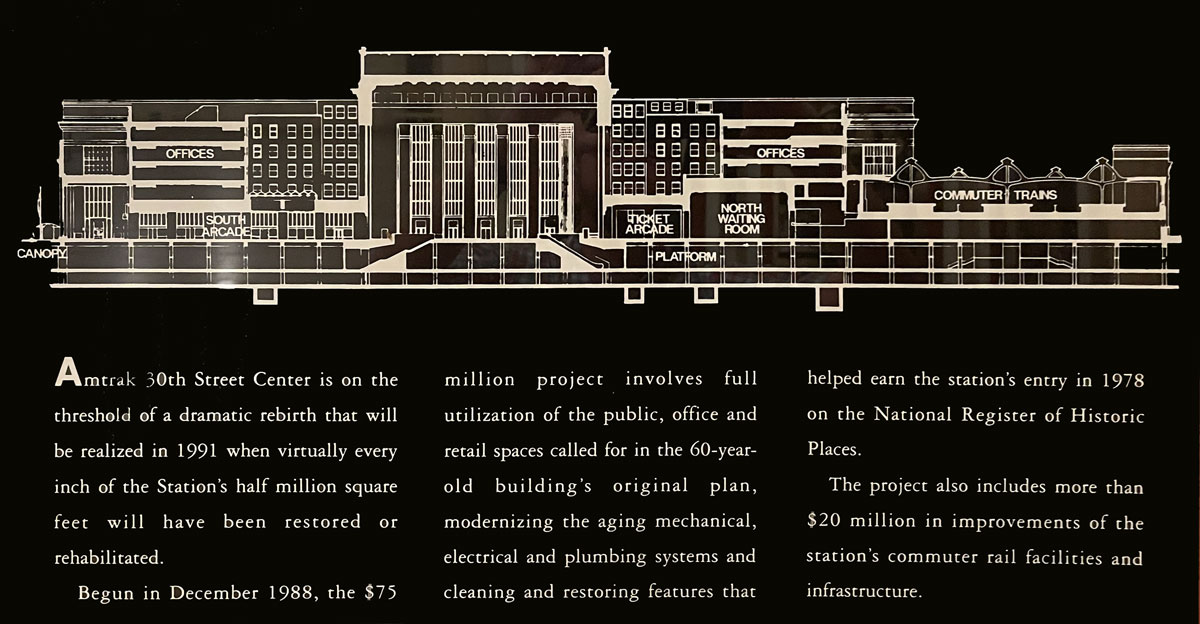
Jul 2022 / RWH

Jul 2022 / RWH
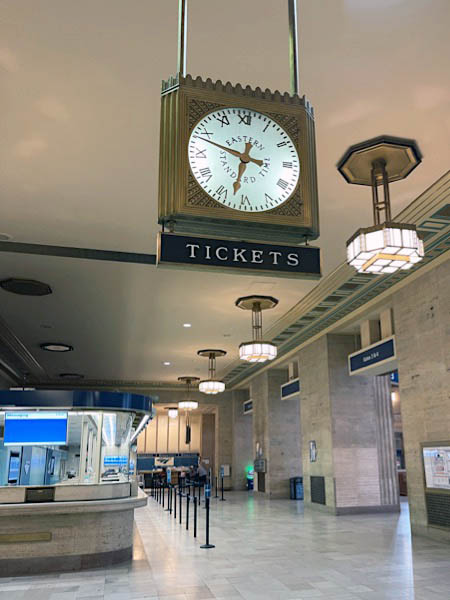
Jul 2022 / RWH
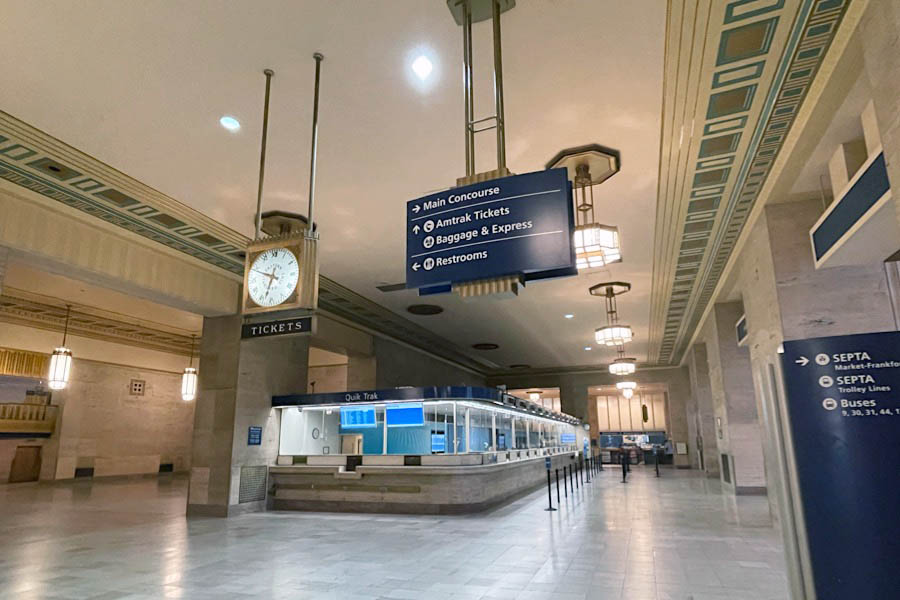
Jul 2022 / RWH

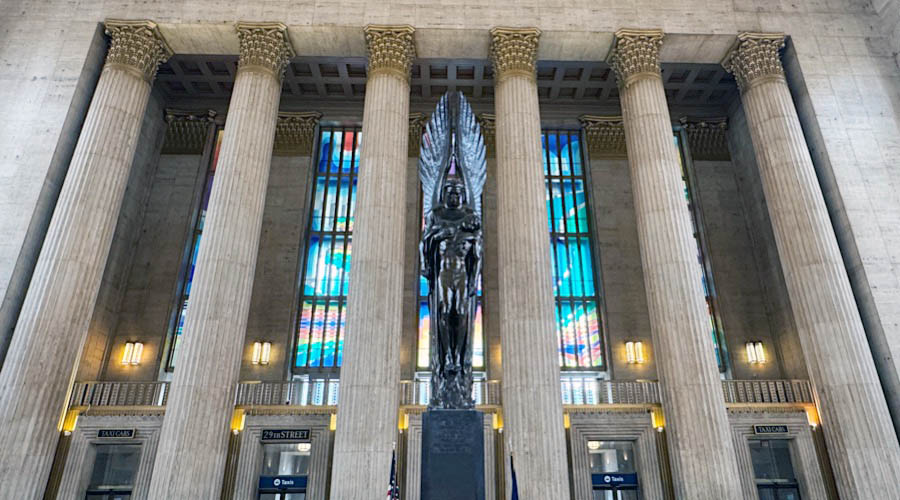
May 2024 / RWH
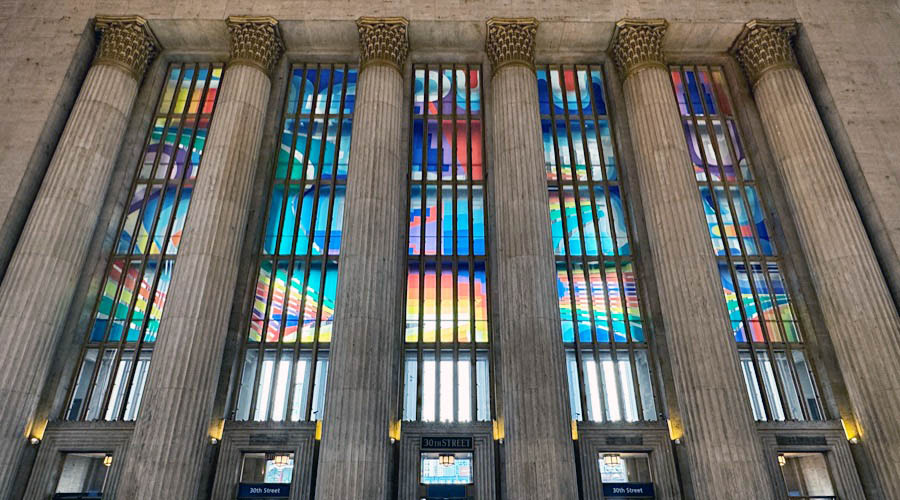
May 2024 / RWH
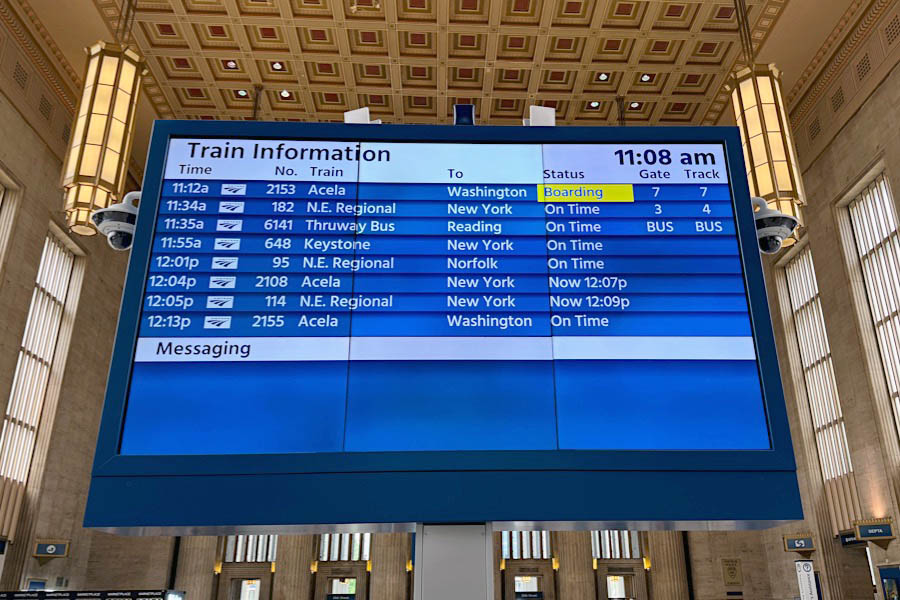
May 2024 / RWH

May 2024 / RWH
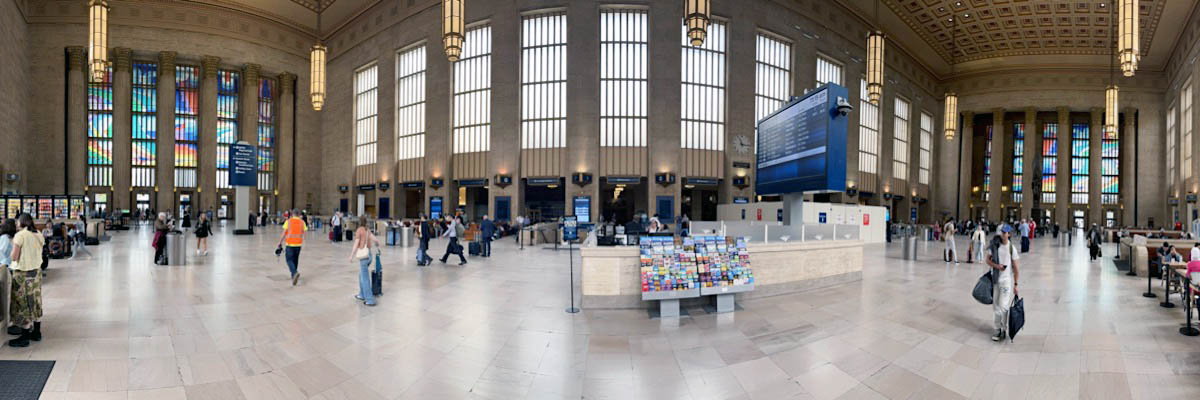
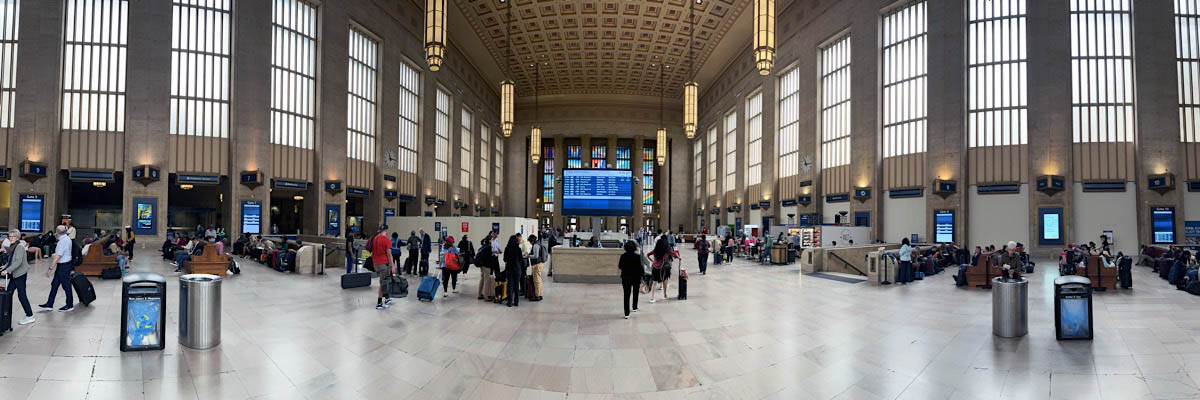
May 2024 / RWH
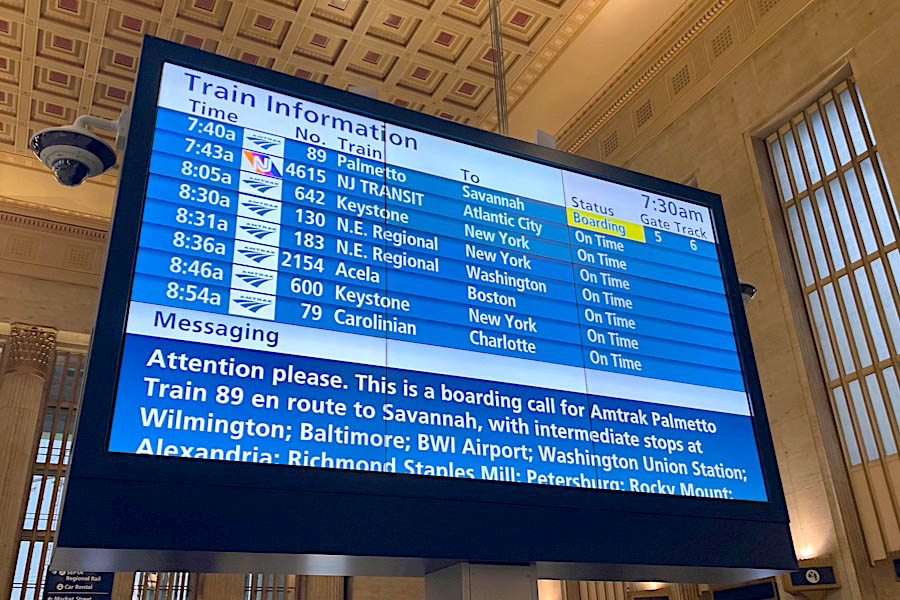
Feb 2022 / RWH
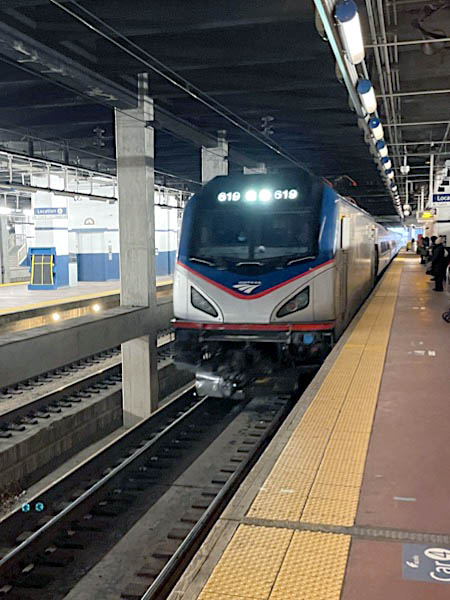
Feb 2022 / RWH
 Flipping Sign Board
Flipping Sign Board
Philadelphia, Pa / Apr 2016 / RWH
 Article
Article
The End Is Near for 30th Street Station’s Famous Flipping Board
November 2018
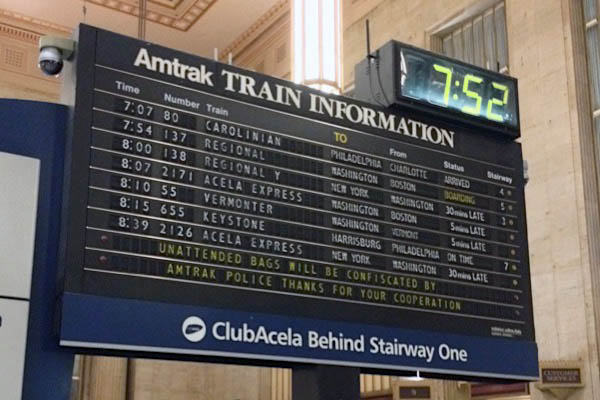 The classic clicking of destinations spinning into place, echoing through 30th Street Station's cavernous great hall, will likely be a thing of the past within two months.
The classic clicking of destinations spinning into place, echoing through 30th Street Station's cavernous great hall, will likely be a thing of the past within two months.
Amtrak plans to remove the Solari board in January, officials said Thursday. It will be replaced by a larger digital sign in the first month of 2019 as part of an upgrade to the station's announcements system. The Solari board, meanwhile, is headed to a new home. The flip-style board, named after its Italian manufacturer, was installed in the 1970's, Amtrak officials said. At that time, the clicking of its placards into place, listing destinations around the country, was synonymous with travel.
"Years ago, they were the standard for train stations, airports," said David Handera, an Amtrak vice president in charge of stations and properties. "I even remember as a kid at Newark Airport, Kennedy, seeing these types of boards." They have become nearly obsolete, though. The one at 30th Street still runs off Windows 95, Handera said, and parts for it are no longer mass-produced and must be custom-made. The Solari board at 30th Street Station in now the last one in operation at Amtrak stations.
The signage upgrade is expected to begin next month, Handera said. Digital signs are to be installed above the stairways to all the platforms in December. The new boards will start working in early January, and the digital replacement for the Solari is expected to be operational in late January. The new board, which will display information being announced over the public address system for people with hearing disabilities, will list arrivals and departures, and can also show information on boardings by passenger class and safety information.
The new system will cost about $11 million, Amtrak reported. The Solari board is being donated to the Railroad Museum of Pennsylvania in Strasburg, Lancaster County. The board will likely be put in place there sometime in 2019, though an exact timetable hasn't been set. "The logistics of removing it, getting it prepared for transportation, getting it from point to point, is going to be difficult," said Howard Pollman, spokesman for the Pennsylvania Historical and Museum Commission, "because there are literally a lot of moving parts."
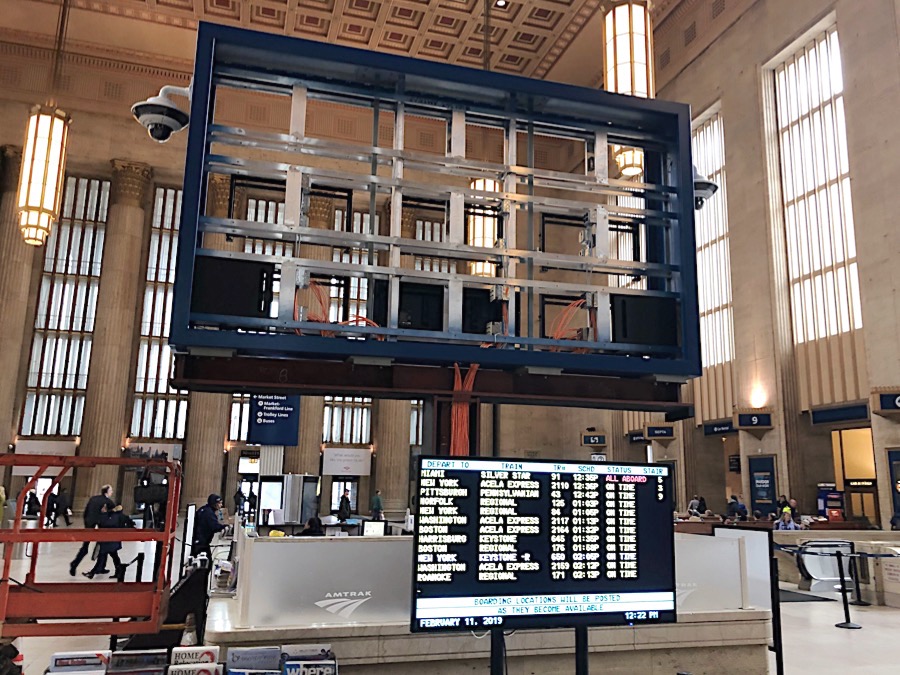
Philadelphia, Pa / Feb 2019 / RWH
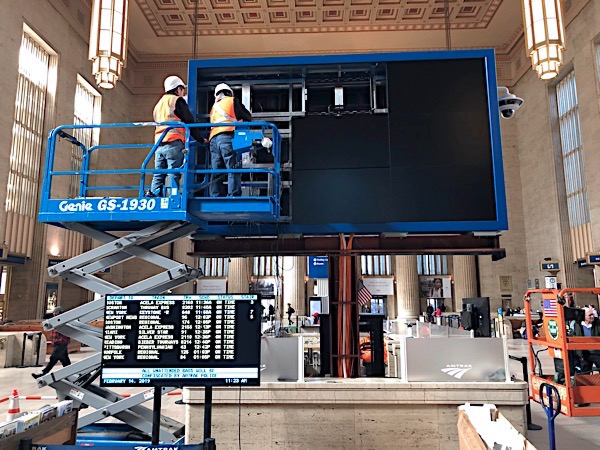
Feb 2019 / RWH
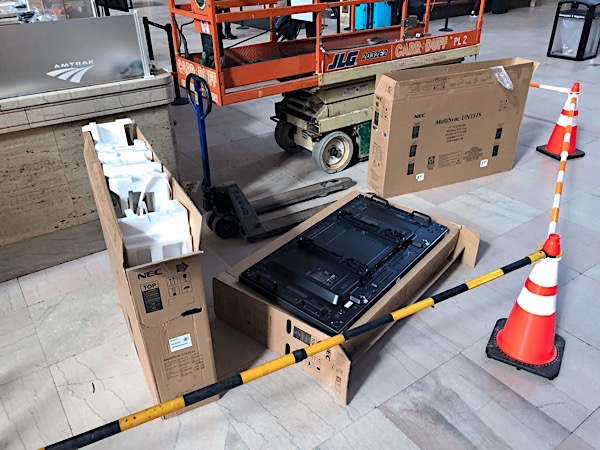
Feb 2019 / RWH
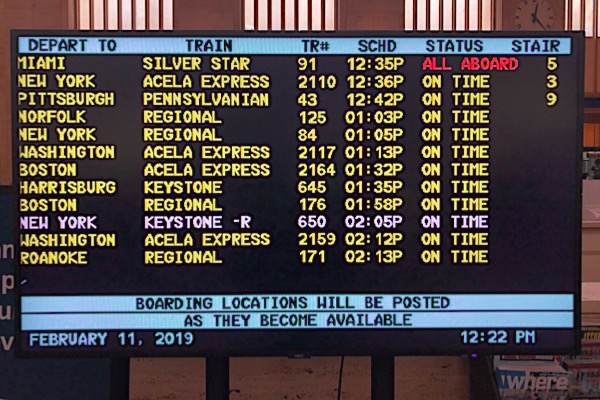
Feb 2019 / RWH
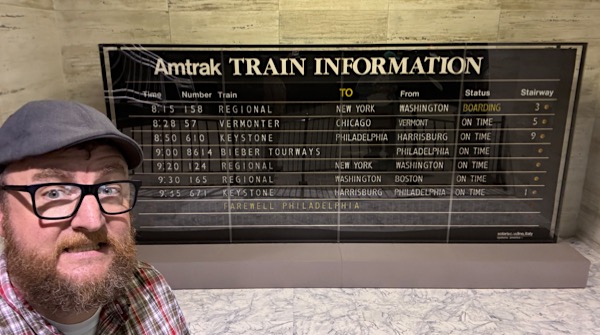
May 2024 / RWH
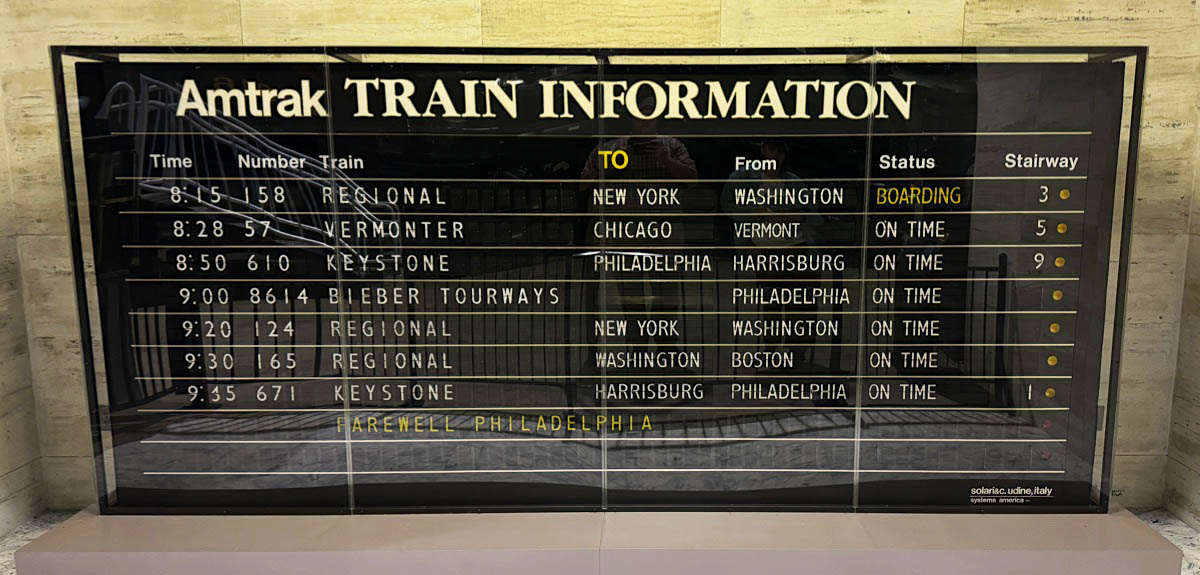
Strasburg, Pa / May 2024 / RWH
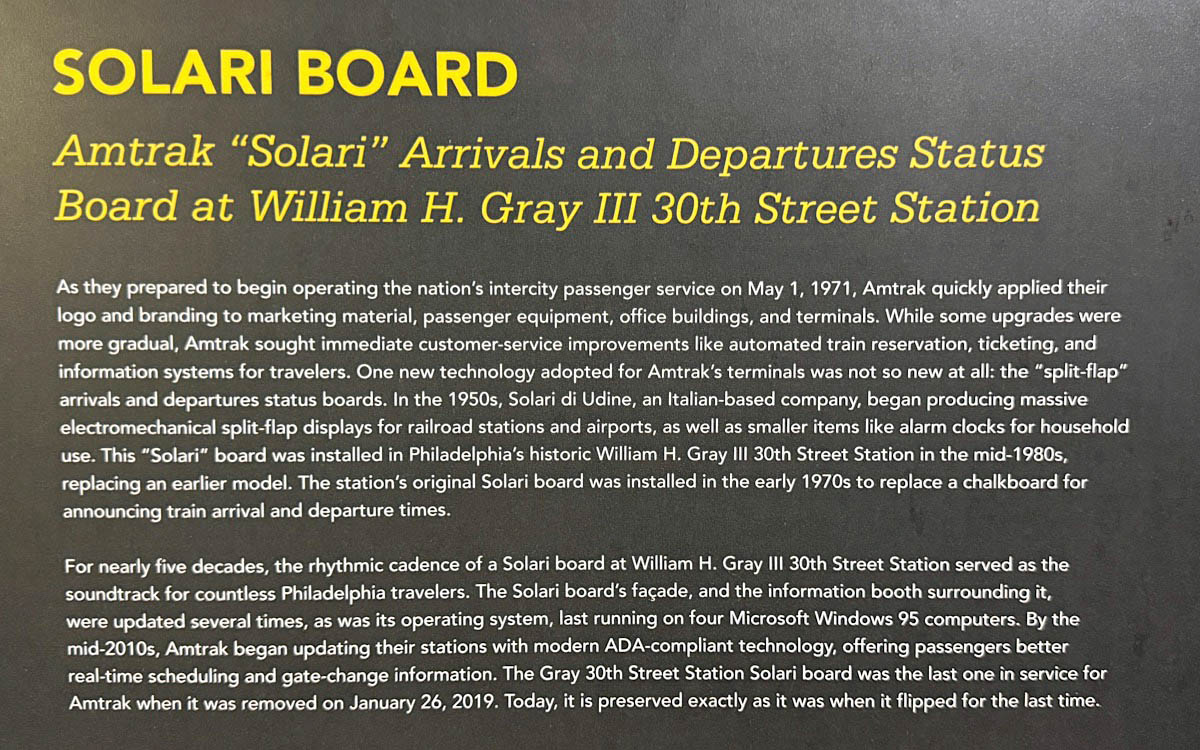
May 2024 / RWH

See also our complete Railroad Museum of Pennsylvania scrapbook in Preservation
 Spirit of Transportation
Spirit of Transportation
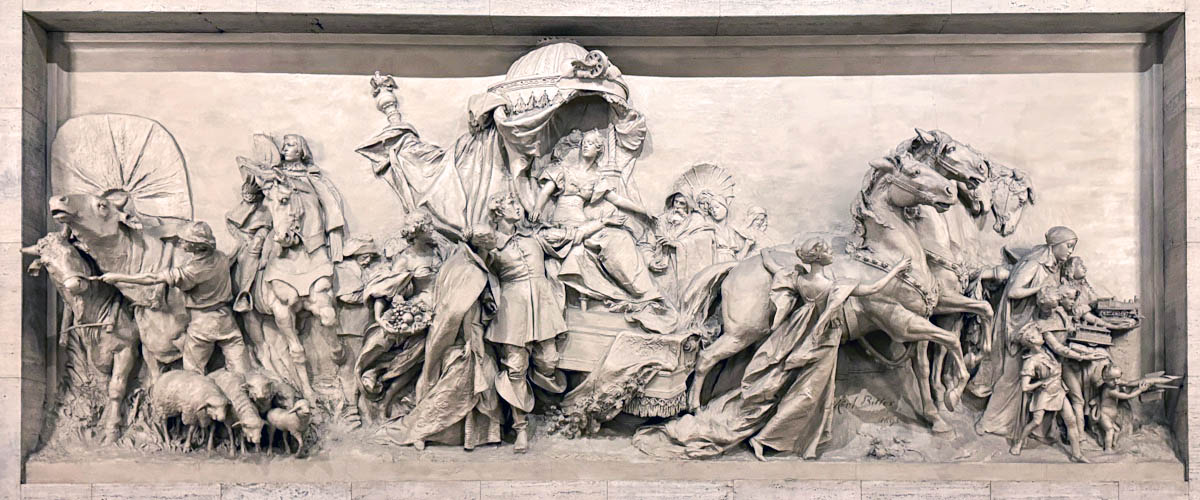
May 2024 / RWH


 ver the years, impressive monuments have been added to the station’s public spaces. Visitors can find Karl Bitter’s 1895 bas-relief, The Spirit of Transportation, in the North Waiting Room off the Main Concourse. Occupying almost the entire west wall, it depicts the progress of transportation; a central female figure sits in a horse-drawn carriage, while children cradle models of a steamship, steam locomotive and dirigible. Also prominently displayed is Walker Hancock’s Pennsylvania Railroad War Memorial, a sculpture of the Archangel Michael lifting a dead soldier’s body out of the flames of war. Cast in 1950, the memorial honors the 1,307 PRR employees who died in military service during World War II, out of the 54,035 who served.
ver the years, impressive monuments have been added to the station’s public spaces. Visitors can find Karl Bitter’s 1895 bas-relief, The Spirit of Transportation, in the North Waiting Room off the Main Concourse. Occupying almost the entire west wall, it depicts the progress of transportation; a central female figure sits in a horse-drawn carriage, while children cradle models of a steamship, steam locomotive and dirigible. Also prominently displayed is Walker Hancock’s Pennsylvania Railroad War Memorial, a sculpture of the Archangel Michael lifting a dead soldier’s body out of the flames of war. Cast in 1950, the memorial honors the 1,307 PRR employees who died in military service during World War II, out of the 54,035 who served.
In spring 2022, Amtrak revealed a new custom art exhibit designed by longtime customer and local artist Virginia Maksymowicz. Located in the North Waiting Room, it is a 14×10 foot replica map of the Amtrak network. Titled Tools of the Trade, the sculpture is composed of tools cast in low-density urethane resin; casts of spikes and bolts suggest mountains, and S-curved wrenches, calipers and railroad clips signify water. The work is meant to make visible the often-invisible role that railroad workers play in building and maintaining Amtrak’s infrastructure.
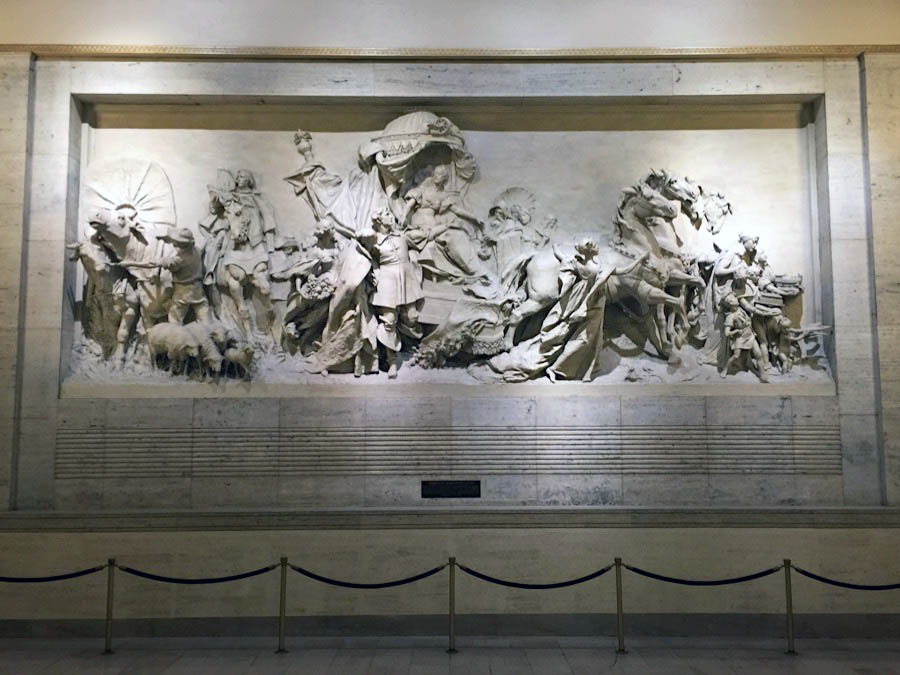
Apr 2016 / RWH
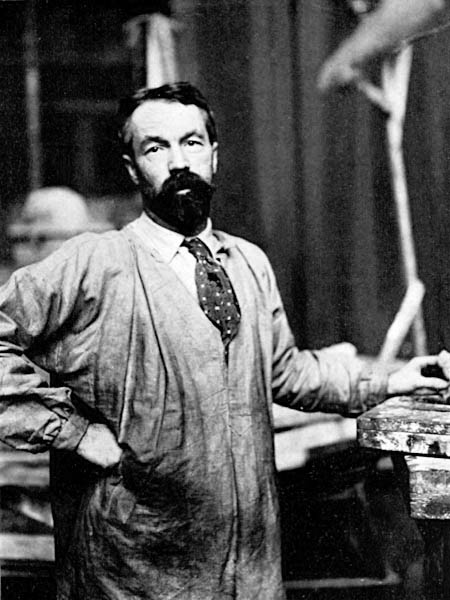 Karl Theodore Francis Bitter (December 6, 1867 – April 9, 1915) was an Austrian-born American sculptor best known for his architectural sculpture, memorials and residential work.
Karl Theodore Francis Bitter (December 6, 1867 – April 9, 1915) was an Austrian-born American sculptor best known for his architectural sculpture, memorials and residential work.
Bitter immigrated to the United States in 1889, arriving in New York City. He applied for citizenship, and set to work as an assistant with a firm of Ellin, Kitson & Co. While employed with this firm, at age 21, he competed for the Astor memorial bronze gates of Trinity Church and won. The work gave him sufficient capital to build and establish a small studio on 13th Street.
Bitter modeled seated statues of Thomas Jefferson and Alexander Hamilton to flank the entrance to the Cuyahoga County Courthouse in Cleveland, Ohio (1909–11). He portrayed the men in early middle age, as in the 1780s when they clashed over what kind of nation the United States should become. Missouri commissioned a copy of Jefferson (1913), and Bitter made minor alterations to portray Jefferson as he looked as president when he signed the Louisiana Purchase Treaty in 1803. For the commission from the University of Virginia, Bitter aged Jefferson further, portraying him as he looked in retirement.
 About this time, Bitter was discovered by Richard Morris Hunt, the architect of choice of many of New York's rich and famous. From that time on Bitter was never without work. After working as a sculptor at the World's Columbian Exposition in Chicago in 1893 and as director at the Pan-American Exposition in Buffalo, New York in 1901, Bitter's extraordinary organizational skills led him to be named head of the sculpture programs at both the 1904 St. Louis Exposition in St. Louis, Missouri, where Lee Lawrie trained with his guidance, and the 1915 Panama–Pacific International Exposition held in San Francisco, California. In 1906/1907, he presided over the National Sculpture Society.
About this time, Bitter was discovered by Richard Morris Hunt, the architect of choice of many of New York's rich and famous. From that time on Bitter was never without work. After working as a sculptor at the World's Columbian Exposition in Chicago in 1893 and as director at the Pan-American Exposition in Buffalo, New York in 1901, Bitter's extraordinary organizational skills led him to be named head of the sculpture programs at both the 1904 St. Louis Exposition in St. Louis, Missouri, where Lee Lawrie trained with his guidance, and the 1915 Panama–Pacific International Exposition held in San Francisco, California. In 1906/1907, he presided over the National Sculpture Society.
Among the awards won by Bitter were the silver medal of the Paris Exposition, 1900; the gold medal of the Pan-American Exposition, 1901; a gold medal at Philadelphia, 1902; and the gold medal at the St. Louis Exposition, 1904. He was a member of the National Institute of Arts and Sciences, vice-president (1906–08 and 1914–15); the National Academy of Design, to which he was elected in 1902; the American Academy of Arts and Letters, Players' Club, Century Club, and vice-president of the Architectural League from 1904 to 1906 and from 1909 to 1911, and member of the Art Commission, New York, from 1912 to 1915.
 Although Bitter arose out of the Classical/Naturalist styles he was increasingly turning towards a more modern approach to sculpture. Much of the work in Buffalo and St. Louis was allegorical in nature. Where this would have taken him will never be known, because he was killed in a traffic collision in 1915 when, while leaving the Metropolitan Opera in New York, the driver of a car jumped the curb on Broadway and struck him down. His wife survived the crash as he had pushed her out of the way of the oncoming driver.
Although Bitter arose out of the Classical/Naturalist styles he was increasingly turning towards a more modern approach to sculpture. Much of the work in Buffalo and St. Louis was allegorical in nature. Where this would have taken him will never be known, because he was killed in a traffic collision in 1915 when, while leaving the Metropolitan Opera in New York, the driver of a car jumped the curb on Broadway and struck him down. His wife survived the crash as he had pushed her out of the way of the oncoming driver.
Like many of the sculptors and painters of the day, Bitter frequently employed the services of the muse and history's first "super model", Audrey Munson. On June 30, 1901, he married Marie A. Schevill, of Cincinnati, Ohio. They had three children: Francis T. R. Bitter, Marietta C. E. Bitter and John F. Bitter. Their son Francis Bitter, born in 1902, became a prominent American physicist.
Wikipedia / mural image RWH
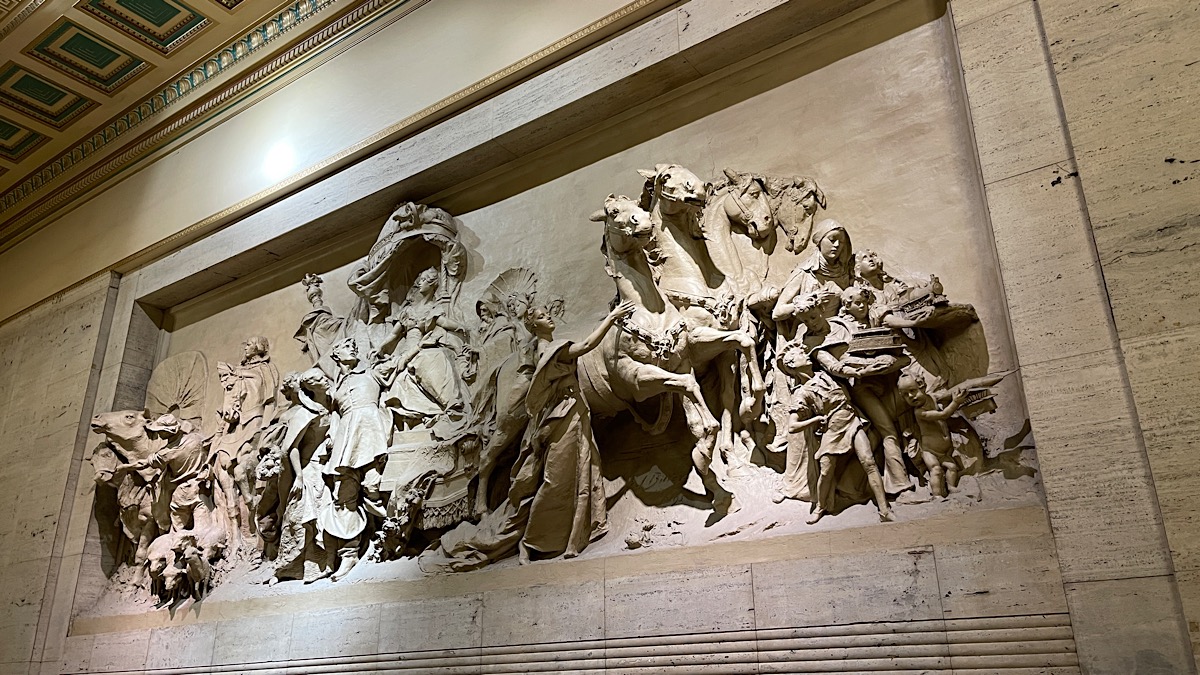
Feb 2022 / RWH
Lagniappe



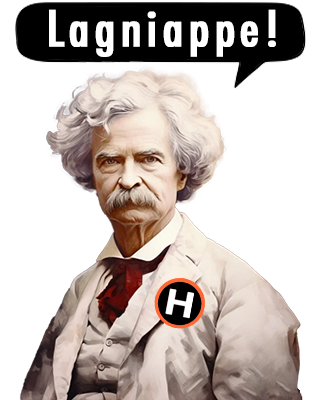
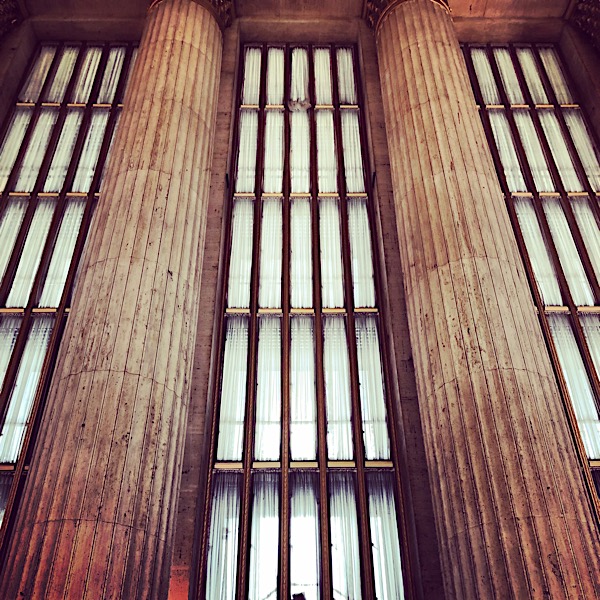
Columns
Philadelphia, Pa / Feb 2019 / RWH
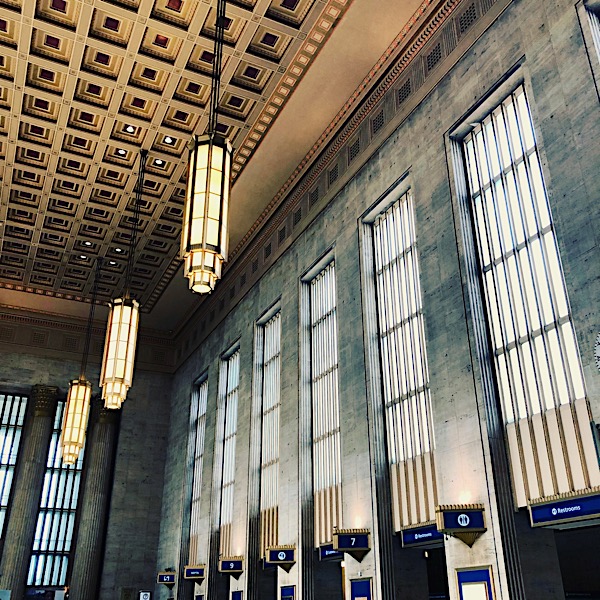
Art Deco
Philadelphia, Pa / Feb 2019 / RWH
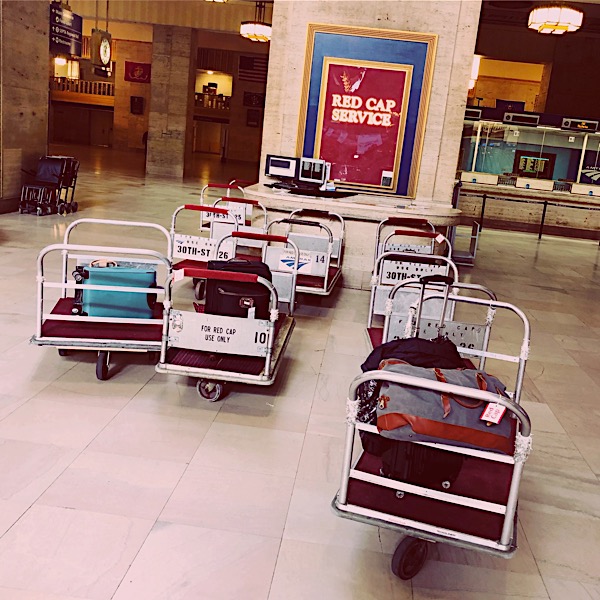
Red Caps
Philadelphia, Pa / Feb 2019 / RWH

Out With Old
Philadelphia, Pa / Feb 2019 / RWH

Transportation
Philadelphia, Pa / Feb 2019 / RWH
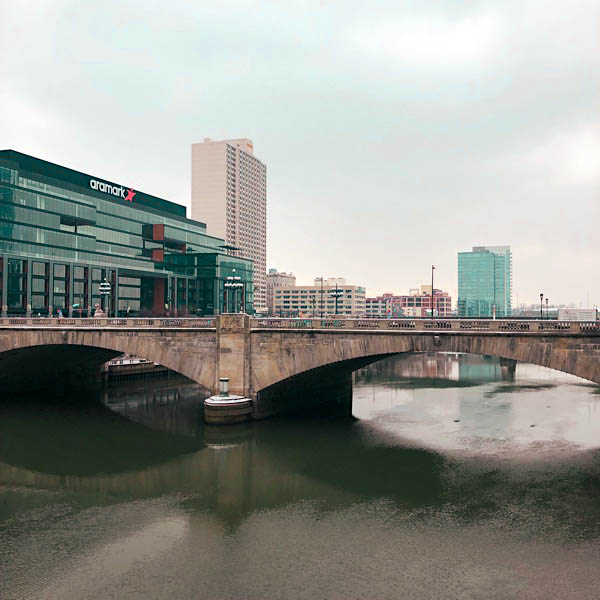
Schuylkill Scene
Philadelphia, Pa / Feb 2019 / RWH
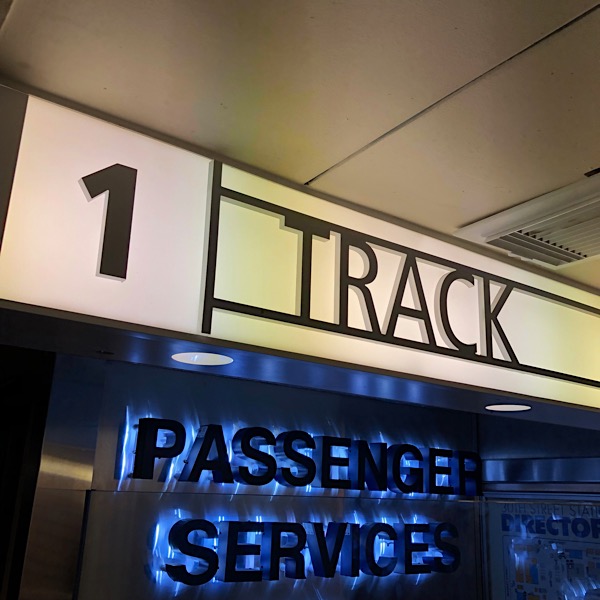
Johnny One Note
Philadelphia, Pa / Feb 2019 / RWH

Mind the Gap
Philadelphia, Pa / Feb 2019 / RWH
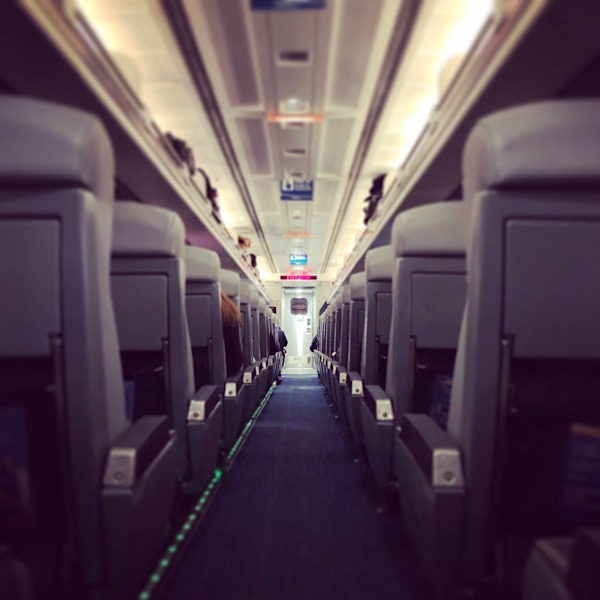
Philly Departure
Philadelphia, Pa / Feb 2019 / RWH
 Snapshots
Snapshots

Feb 2022 / RWH
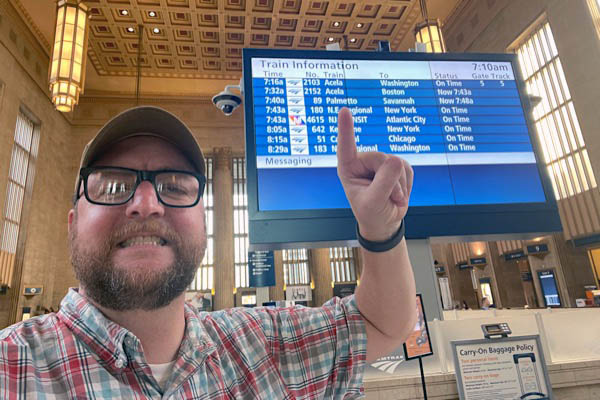
Jul 2022 / RWH
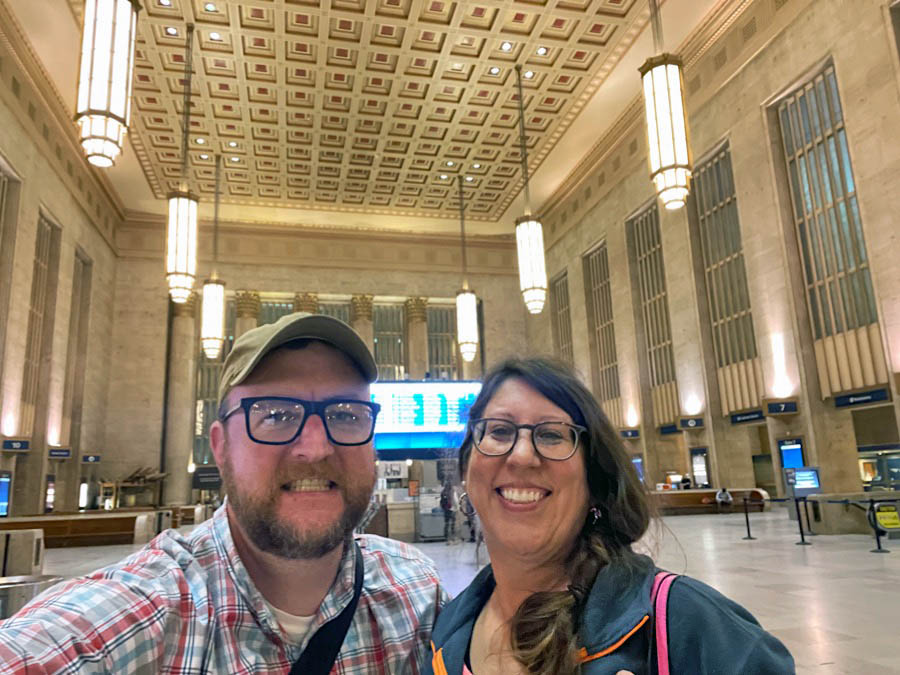
Jul 2022 / RWH
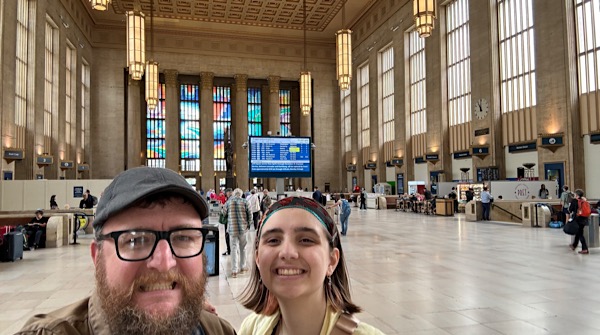
May 2024 / RWH
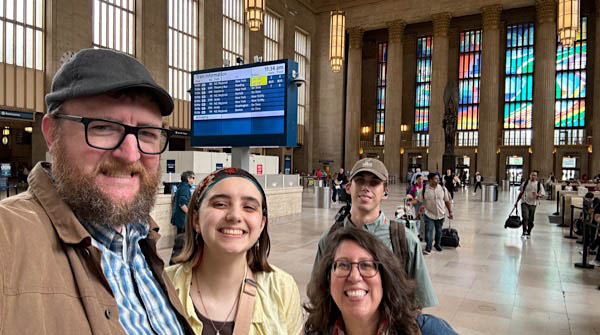
May 2024 / RWH

May 2024 / RWH
Links / Sources
- Amtrak page for 30th Street Station
- Great American Stations 30th Street page
- Wikipedia article for 30th Street Station
- Curbed Philadelphia 30th Street guide
- Gray 30th Street Station

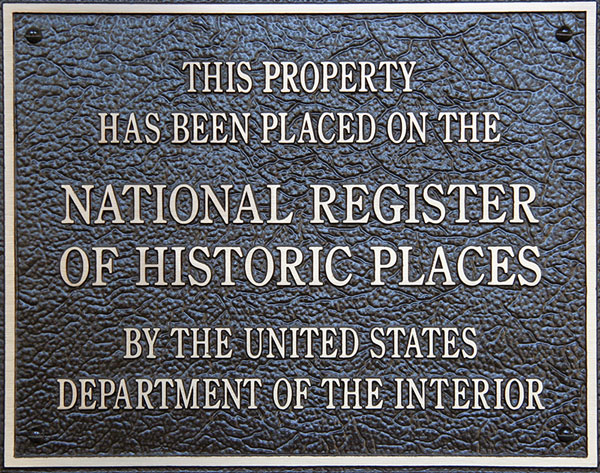
 At the same time, this station is rare in that it is one of the few in the country where trains arrive and depart from all four directions: from Boston in the north to Florida in the south, and from Atlantic City in the east to Chicago in the west. Facilitating this rare versatility, the station’s use of underground tracks for long-distance trains passing through the station marked the railroad’s commitment to electricity as a preferable source of energy for trains, continuing the gradual replacement of steam—itself a radical paradigm shift in the industry.
At the same time, this station is rare in that it is one of the few in the country where trains arrive and depart from all four directions: from Boston in the north to Florida in the south, and from Atlantic City in the east to Chicago in the west. Facilitating this rare versatility, the station’s use of underground tracks for long-distance trains passing through the station marked the railroad’s commitment to electricity as a preferable source of energy for trains, continuing the gradual replacement of steam—itself a radical paradigm shift in the industry.
 As a major transportation hub and West Philadelphia landmark, William H. Gray III 30th Street Station continues to be an anchor for development. In 2004, investors broke ground on the construction of the Cira Center, a 29-story office building designed by architect César Pelli. Completed the following year, the new building both stands on ground leased from Amtrak and also includes a skyway connecting it to a parking lot and the station. Designed by the same architect who built the world-famous Petronas Twin Towers in Malaysia, the striking new building marks both the evolution and continuation of the station’s unique and innovative history.
As a major transportation hub and West Philadelphia landmark, William H. Gray III 30th Street Station continues to be an anchor for development. In 2004, investors broke ground on the construction of the Cira Center, a 29-story office building designed by architect César Pelli. Completed the following year, the new building both stands on ground leased from Amtrak and also includes a skyway connecting it to a parking lot and the station. Designed by the same architect who built the world-famous Petronas Twin Towers in Malaysia, the striking new building marks both the evolution and continuation of the station’s unique and innovative history.
